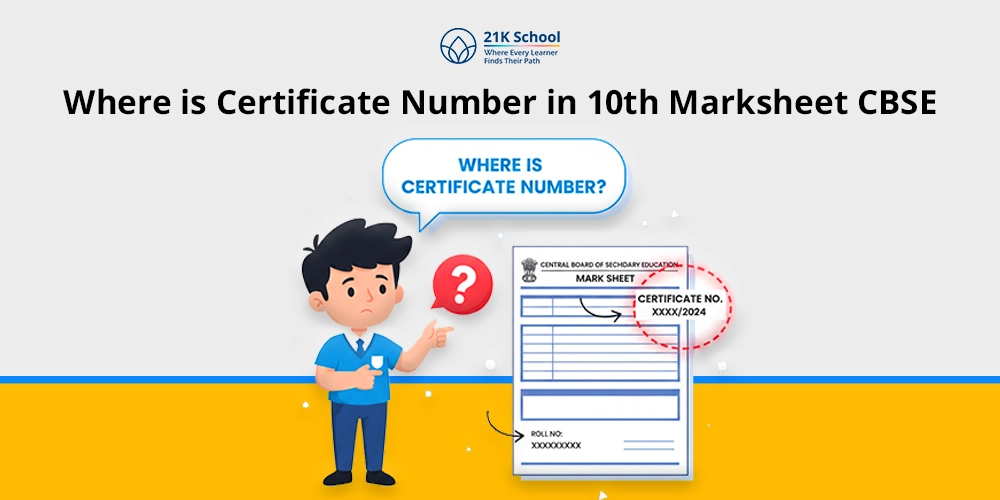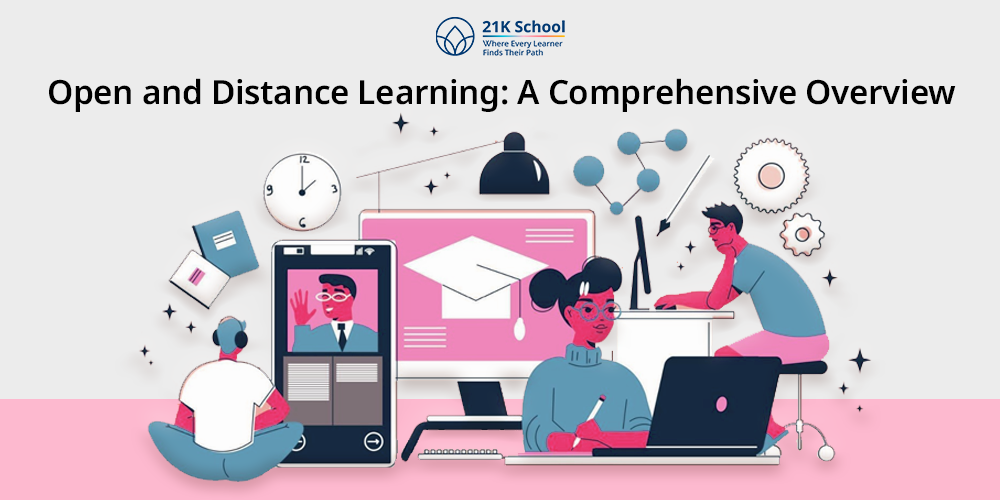
Recent decades brought a huge change in the world of education due to technology development and changes in educational requirements. One of the most critical changes that have been witnessed is the adoption of Open and Distance Learning (ODL).
ODL enables the students to gain education wherever they are with or without having to be in an actual classroom. The approach has been invaluable to people who lack access to traditional forms of education because of travel, or financial reasons.
Read on to find more benefits of distance learning every student should know .
ODL is also contributing to the democratization of education all over the world due to its exclusive flexibility. In this paper we will discuss the term Open and Distance Learning (ODL).
This will include its history, main characteristics and its benefits to the contemporary field of study.
Table of Contents
- What is Open and Distance Learning (ODL)?
- Evolution of Open and Distance Learning
- Essential characteristics of Open and Distance Learning (ODL)
- Several Benefits of Open and Distance Learning
- Leading Open Distance Learning Providers of India
- Difference Between Open Learning and Distance Learning
- Challenges in Open and Distance Learning
- Strategies to Implement Open and Distance Learning
- Trends in Open and Distance Learning in Future
- 1. Greater Artificial Intelligence (AI) and Machine Learning
- 2. Microlearning and Modular Courses Resurgence
- 3. Combined Learning Spaces
- 4. AR and VR Learning
- 5. Blockchain to Credential and Certification
- 6. More Global Cooperation
- 7. Dwelling on Lifelong and Continuous education
- 8. Improved Mobility Learning
- In Conclusion
What is Open and Distance Learning (ODL)?
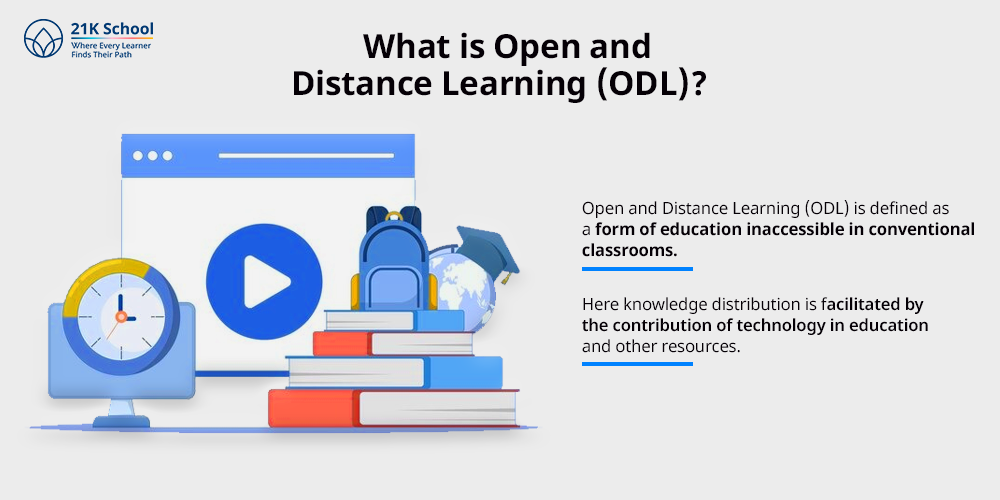
Open and Distance Learning (ODL) is defined as a form of education inaccessible in conventional classrooms. Here knowledge distribution is facilitated by the contribution of technology in education and other resources.
Students are able to receive learning materials either online or through other media with little or no face-to-face meeting. The underlying idea of ODL is that anyone is capable of receiving education no matter wherever, and whoever they are.
ODL may harbor any level of learning including primary and higher education. And can be applied in vocation training, career building and even lifelong learning .
As the technology changed, ODL has become more dynamic. It now includes asynchronous and synchronous e-learning formats, multimedia instructions, and interactive content.
Evolution of Open and Distance Learning
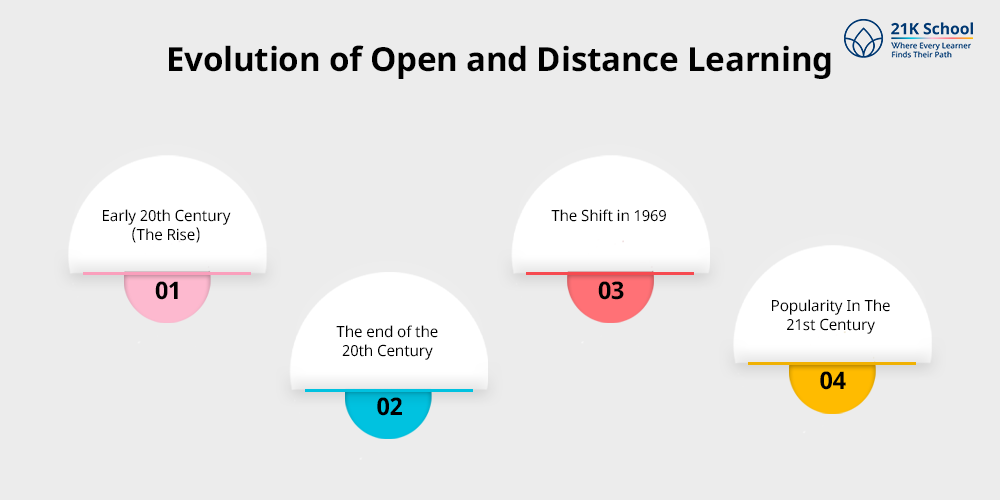
The history of Open and Distance Learning (ODL) has evolved out of correspondence services to the most current technology-based programs. ODL is now more adaptable, accommodating and learner-driven than ever. And this is due to the advent of digitalization, web accessibility, and interactive learning.
1. Early 20th Century (The Rise)
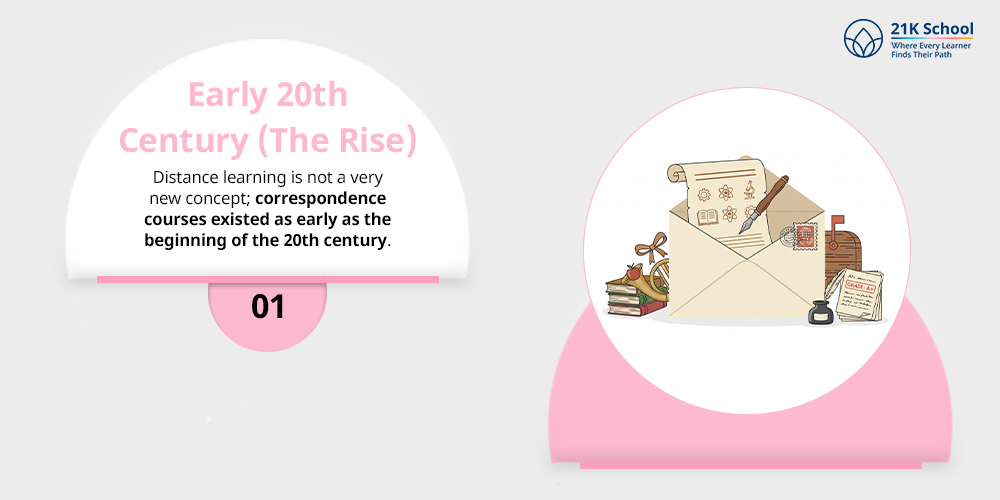
Distance learning is not a very new concept; correspondence courses existed as early as the beginning of the 20th century. The main content of these courses was the exchange of materials by means of the post.
2. The end of the 20th Century
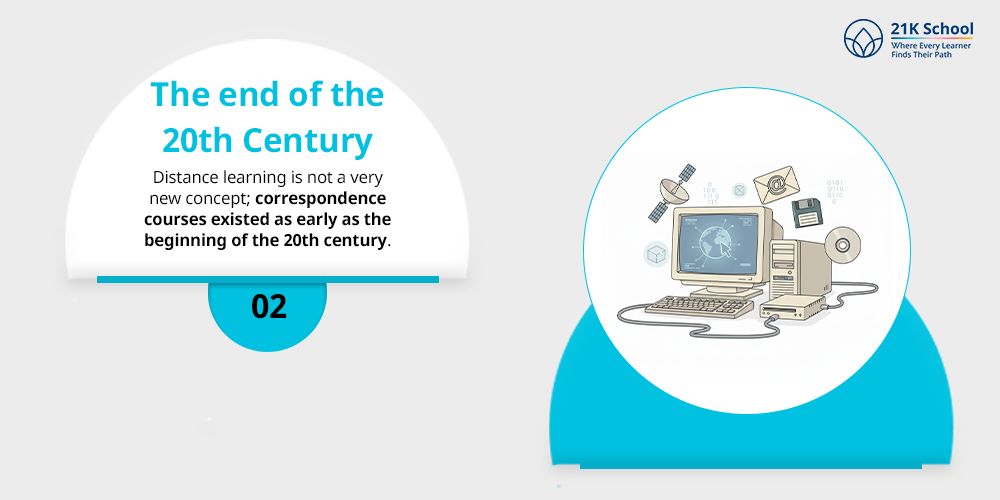
The late 20th century saw the advent of an unfolding of distance education at one level. This got promoted due to the advent of the internet and digital communication aids.
3. The Shift in 1969
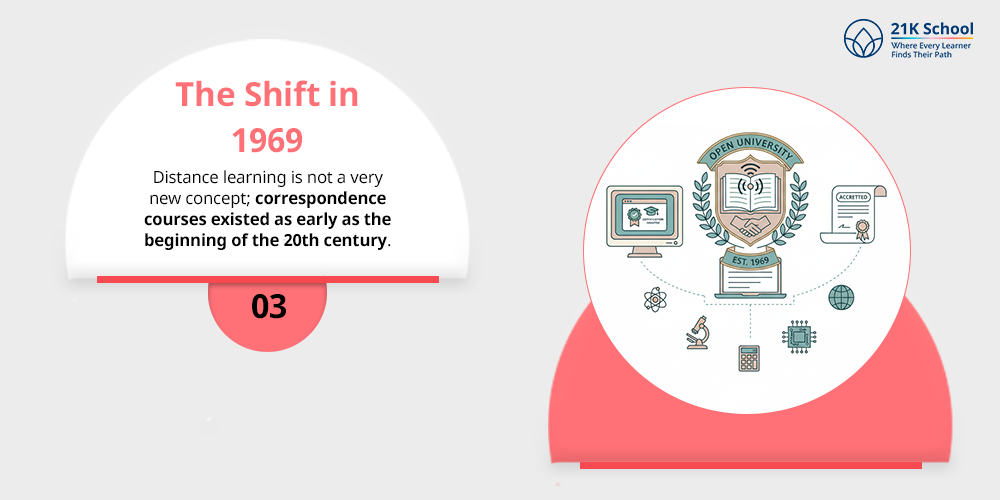
The next major jump was when learning platforms and universities started having accredited degrees and certifications. And that too, these were available completely online.
Open universities, including the Open University in the UK (established in 1969), contributed greatly to the spread of ODL. The prominence of ODL increased by providing a number of courses to their students and not demanding their physical presence.
4. Popularity In The 21st Century
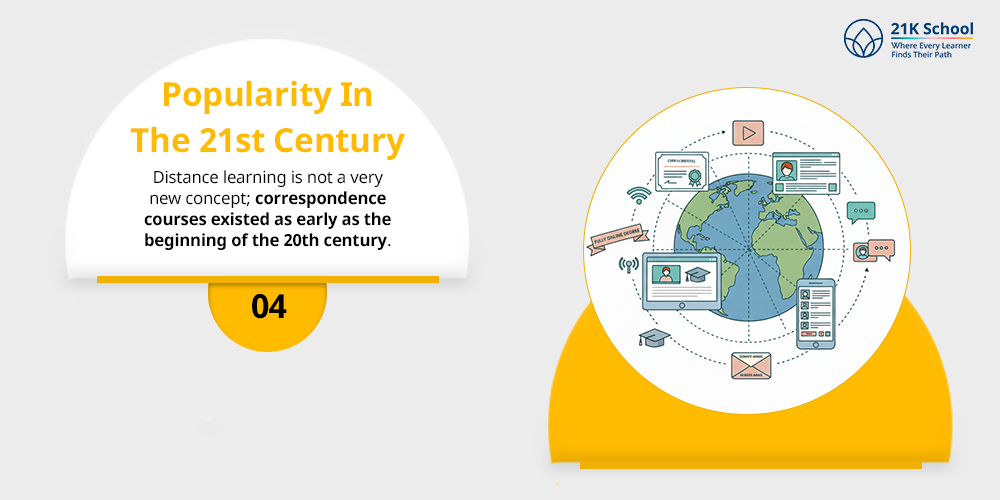
The formative years of the 21st century have been marked by fast growth of ODL. This was heavily due to the internet, social media and mobile technology emerging.
Colleges and universities worldwide started providing a wider range of learning opportunities. Such as fully online degrees, certificate programs, and micro-credentials.
The idea of ODL is a worldwide trend today. It provides education to millions of people, including remote or underserved areas.
Essential characteristics of Open and Distance Learning (ODL)
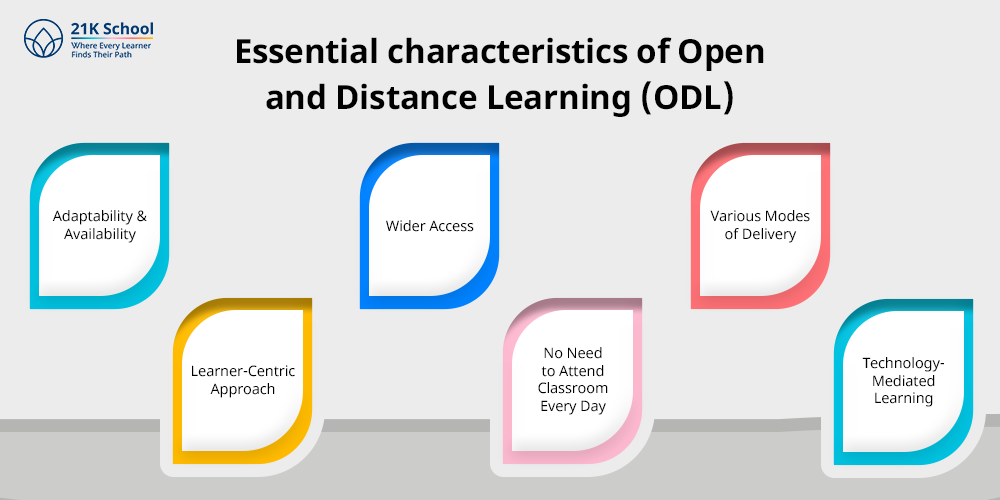
ODL has a number of specific attributes which make it unique in comparison with traditional forms of education. These characteristics do make it an attractive option to most learners in different parts of the world.
1. Adaptability & Availability
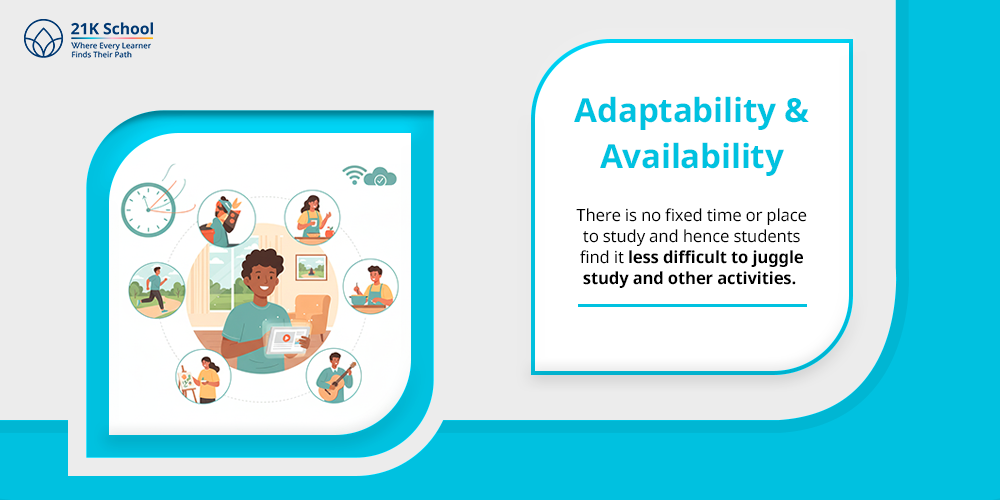
Flexibility is one of the most characteristic ODL features. There is no fixed time or place to study and hence students find it less difficult to juggle study and other activities.
Convenience is also great, as the student has the freedom to determine the time and place to study. As an example, an online master degree could be completed by a working professional at his or her own time.
And that too without a necessity to attend regular classes. It is also flexible leading to children in remote areas and the disabled ones receiving quality education .
2. Wider Access
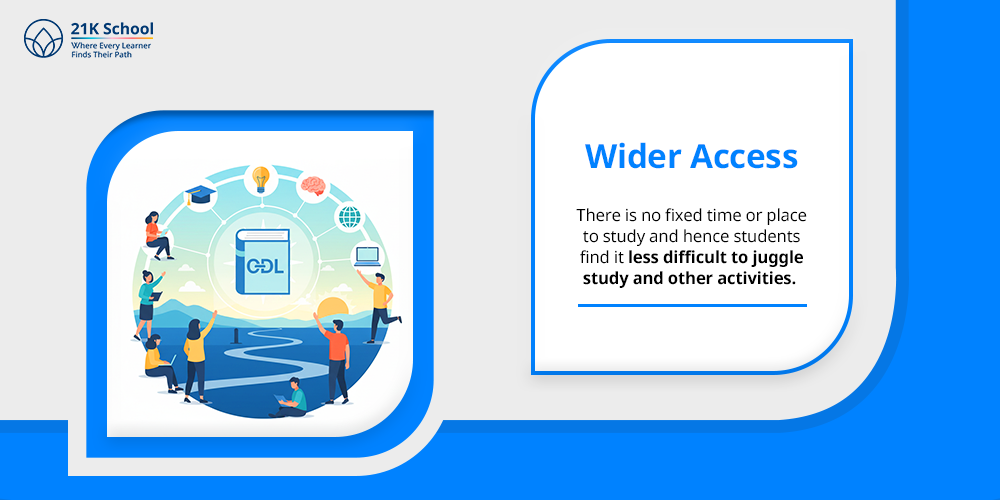
ODL makes education available to a wider group of people and even those who would not have accessed formal education .
Courses and degrees that would otherwise have been inaccessible to certain people are now accessible to all. These people also are living in rural areas, having financial restrictions or are physical and social handicaps.
ODL also enables students to do special areas of study that are not available locally by eradicating geographic barriers.
3. Various Modes of Delivery
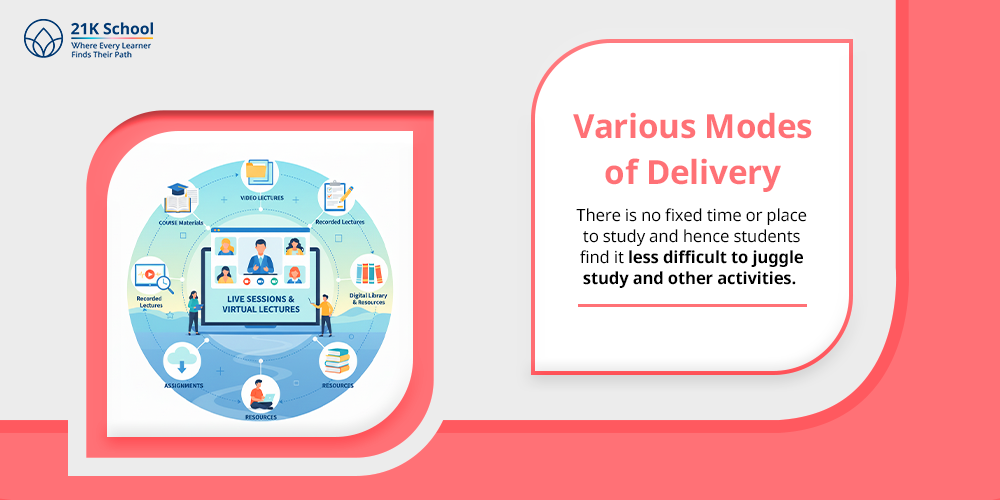
ODL does not involve one mode of delivery only. It may comprise a combination of:
- Asynchronous Learning: Learning process allows the students to access course materials, lectures, and assignments.
- Synchronous Learning: Live sessions, virtual lectures or live discussions through video conferencing channels.
- Hybrid Models: It constitutes a mixture of the two, where there are both asynchronous and synchronous components.
- Flexibility: The flexibility enables the students to select the form of learning that best fits their individual needs and time.
4. Learner-Centric Approach
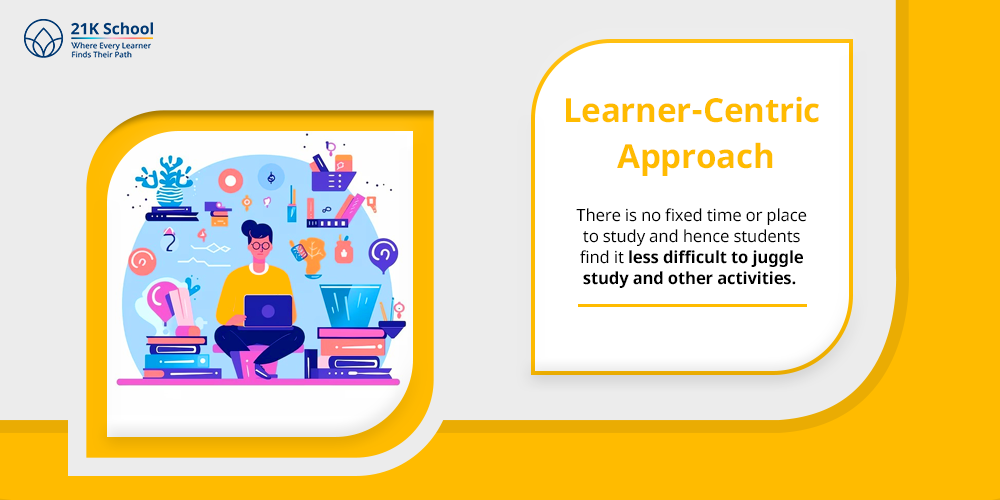
Within an ODL system the learner forms the focus of the learning process. The ODL learning environment as opposed to traditional classroom set up, which may be teacher-led, is focused on self learning.
The students will be responsible for their learning, controlling their time, resources, and progress. This individual touch invokes independence and self-help which are very desirable within the contemporary employment context.
Read more on student-centred learning .
5. No Need to Attend Classroom Every Day
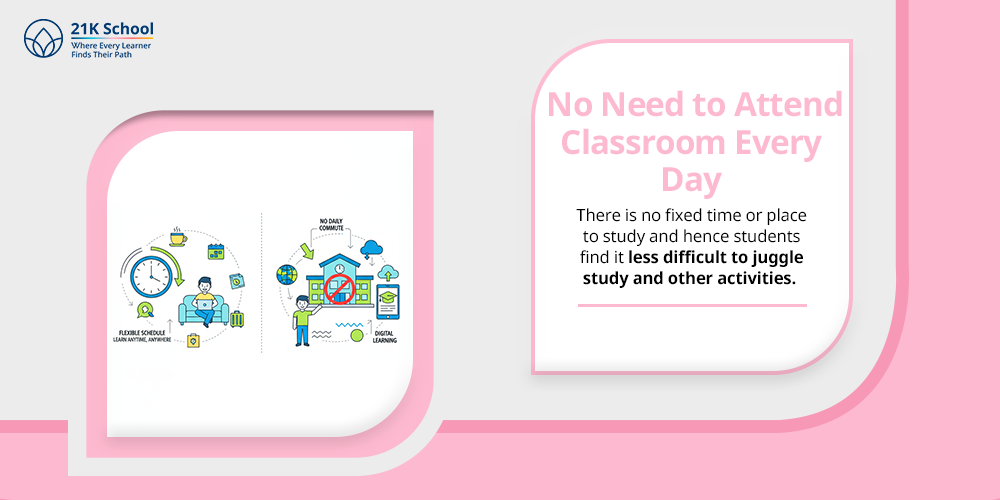
The most important merit of ODL is that students do not have any necessity to visit a physical classroom every day. This eradicates the transportation factor, which saves time and lessens the workplace pressures of time and stress.
Rather, course materials can be studied in online courses, interactive modules, and digital exercises. It also allows institutions to cater to a wider pool of students. Especially those who would otherwise miss the regular classes because of work or family matters.
6. Technology-Mediated Learning
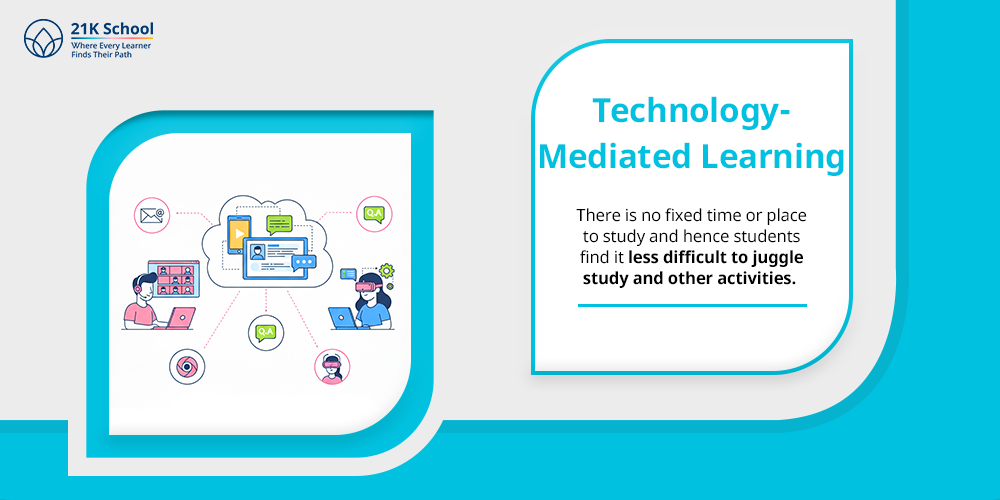
ODL uses the strength of technology to develop the learning process. Lecturers and students interact via emails, online boards, video calls, and even virtual reality (VR) or augmented reality (AR).
Such technologies not only mean more interactive learning. It also enables students to explore and use a variety of multimedia resources, i.e. videos, podcasts, and online libraries.
Thus, providing them a more rich and diverse learning experience.
Several Benefits of Open and Distance Learning
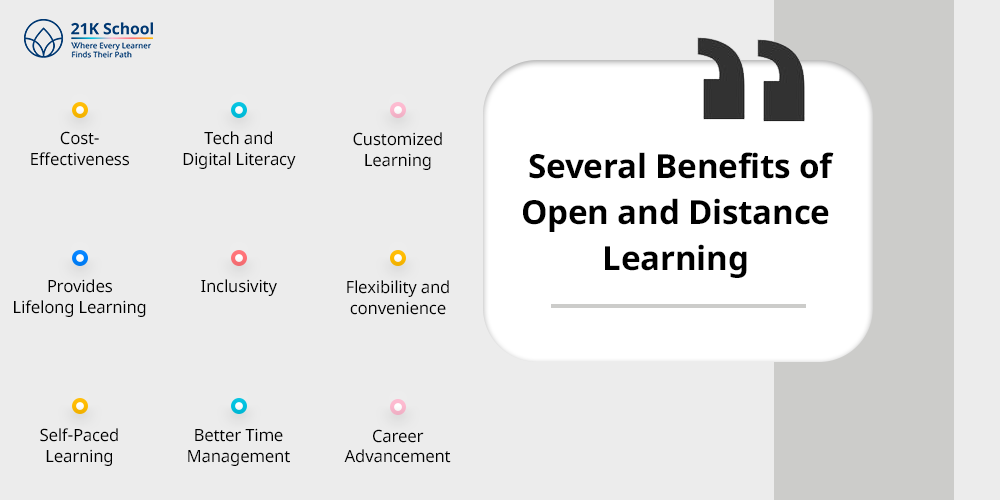
There are many advantages to Open and Distance Learning which proves beneficial to the students and to the educational institutions. These benefits go beyond convenience and construction of a more equitable and inclusive education system that is efficient.
1. Cost-Effectiveness
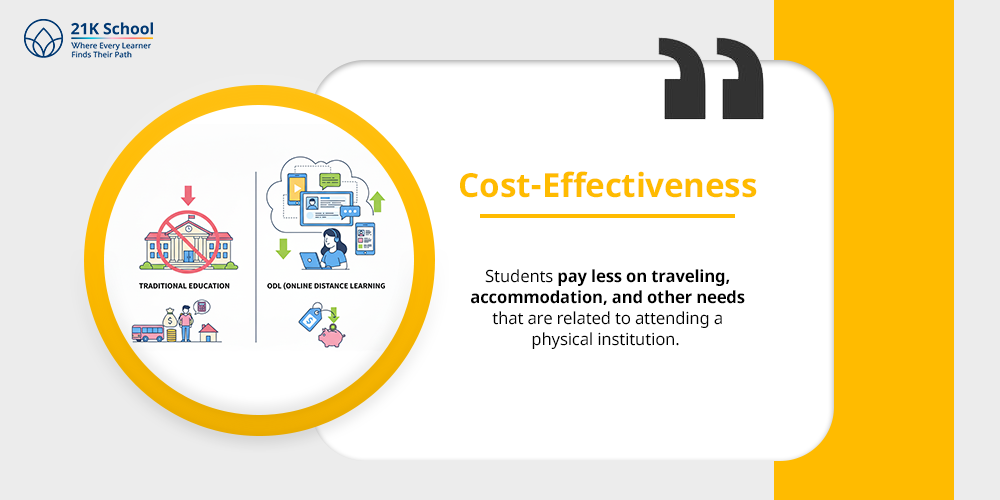
ODL is an education, which is frequently cheaper compared to traditional one. Students pay less on traveling, accommodation, and other needs that are related to attending a physical institution.
Most online programs are relatively less expensive and their costs are unconcealed. Hence, many parents prefer online preschool as a educational foundation which is financially reachable.
2. Tech and Digital Literacy
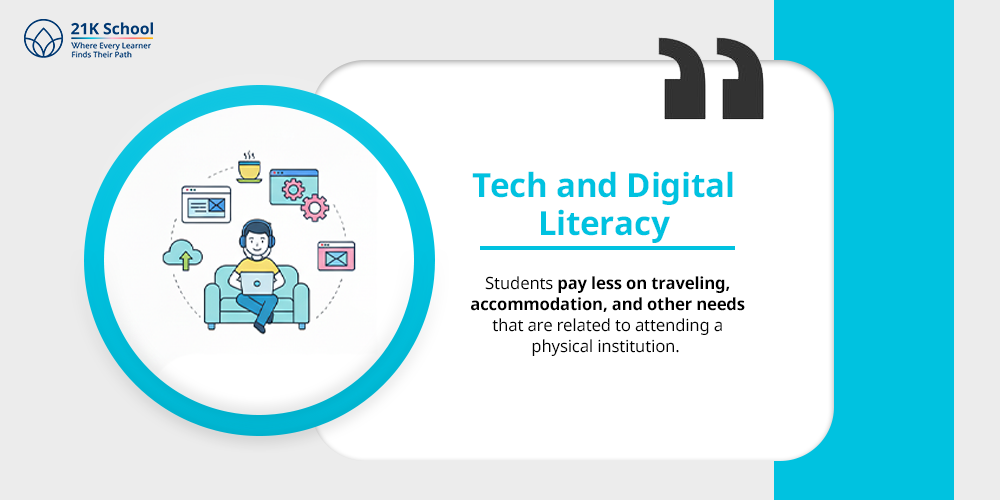
Students also acquire digital literacy through ODL as a natural process. They must work with different online tools, programs, and websites to orient themselves in courses and become more technologically competent.
These competencies are getting essential in the modern labor market where digital literacy is a requirement in most cases.
3. Customized Learning
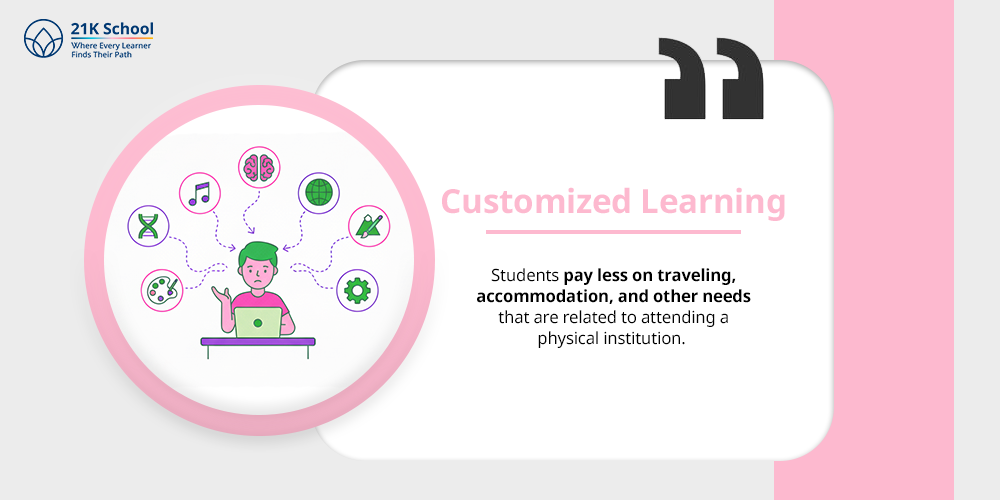
In the ODL, students are allowed to customize their learning. Learners can tailor their learning toward their interests.
They can do this in terms of selecting courses or picking a pace that fits their needs. This highly personalized practice will allow students to be more active and enthusiastic to learn.
Also read personalised learning .
4. Provides Lifelong Learning
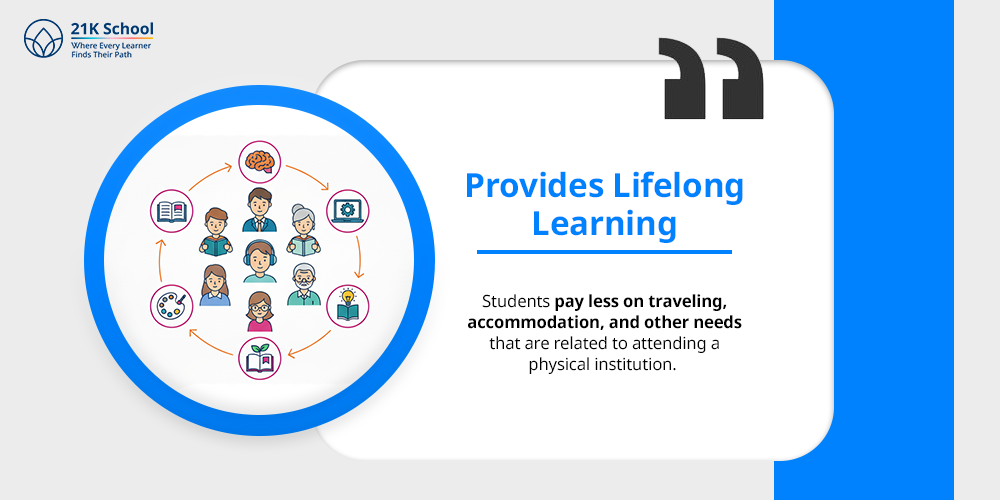
ODL also supports lifelong learning as it provides opportunities to adult learners, working professionals, and upskilling or reskilling. This develops a culture of life-long learning so that people can keep pace with dynamic job markets and technological growth.
ODL also closes the educational gap by offering opportunity to people who may lack access to the conventional educational system. This could be either due to their socio-economic or physical location.
5. Inclusivity
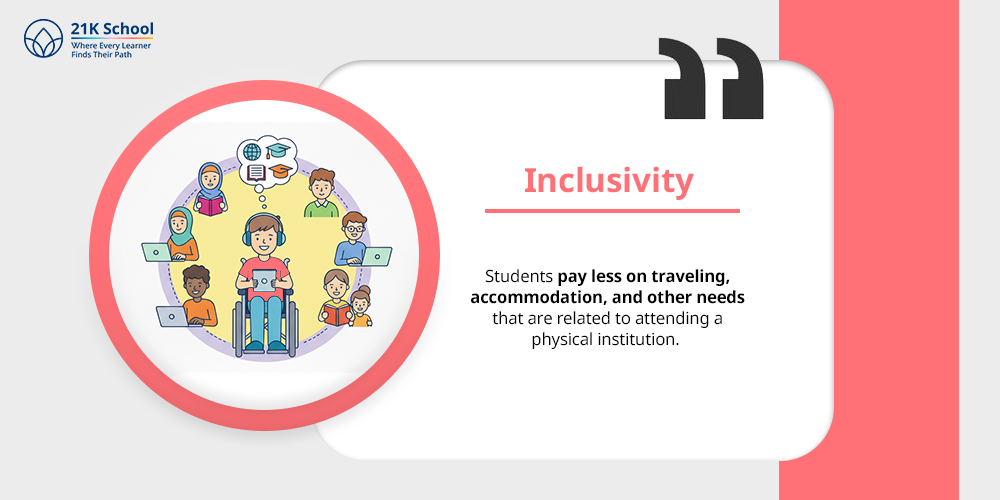
ODL is also inclusive in nature. It provides education to a wide variety of individuals, irrespective of their origin, age, or physical strength.
Individuals with disabilities can use the tools and formats of ODL. They provide flexible and adaptive learning to guarantee an opportunity to all to succeed.
6. Flexibility and convenience
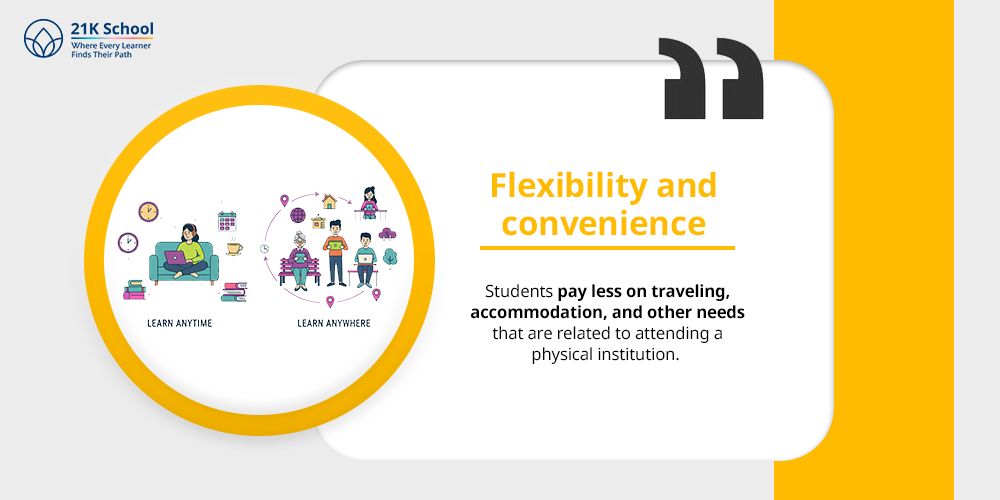
As mentioned previously, ODL provides unsurpassed flexibility and convenience, enabling learners to decide when and where they want to learn. This is the flexibility that guarantees that education is not a one-size-fits-all but can be adjusted to the individual.
Explore one size fits all education .
7. Self-Paced Learning
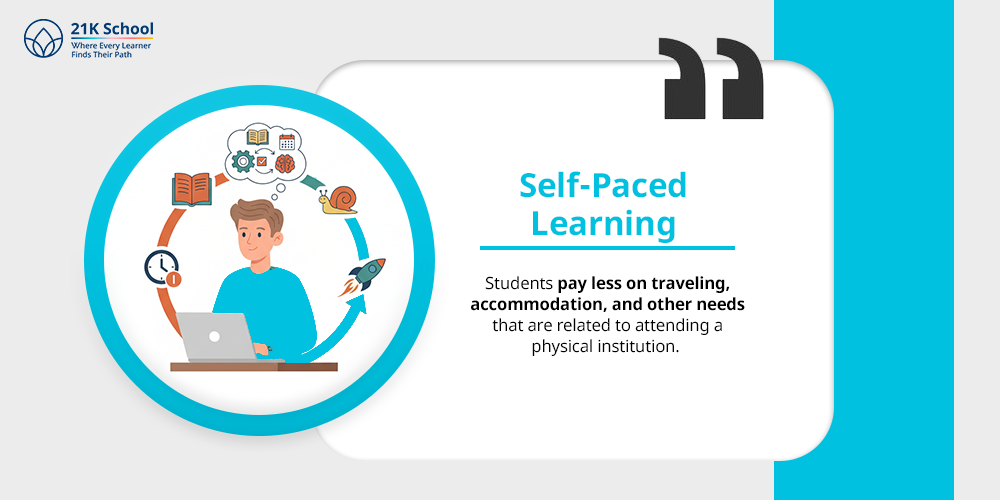
They also provide many ODL programs where students have the liberty of studying at their own pace. This helps learners, especially those who take longer to grasp complicated subjects or those who want to learn faster.
8. Better Time Management
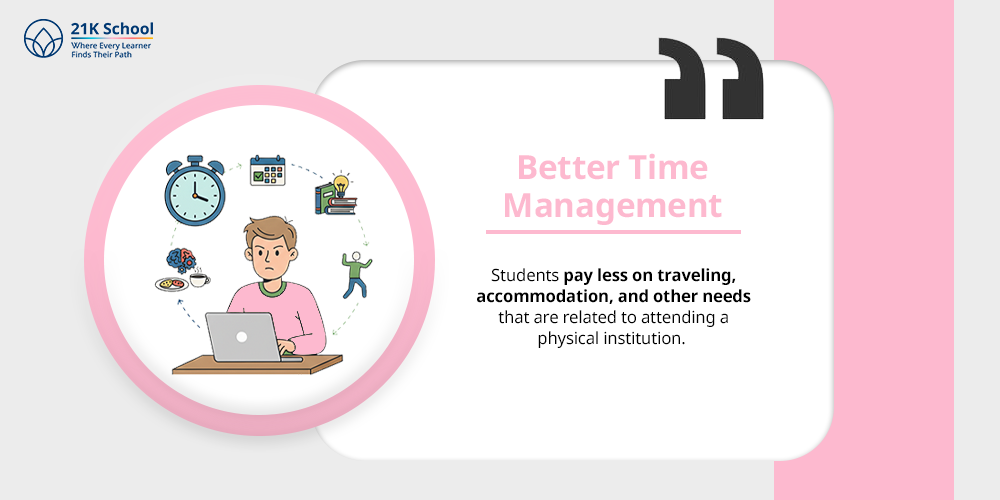
In the ODL programs there is no set time, therefore the students get more disciplined and learn to manage their time better. They have to set time to study, do assignments and do online discussions.
At that time any individual improves time management skills which can be implemented in other parts of life.
9. Career Advancement
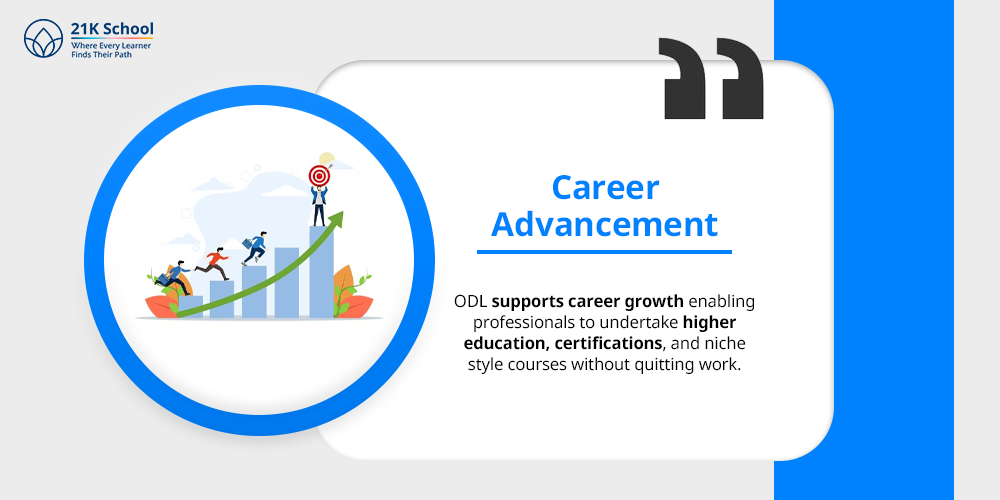
ODL supports career growth enabling professionals to undertake higher education, certifications, and niche style courses without quitting work.
This assists them in improving their talent base, and climbing the career ladder with no interference with their work.
Leading Open Distance Learning Providers of India
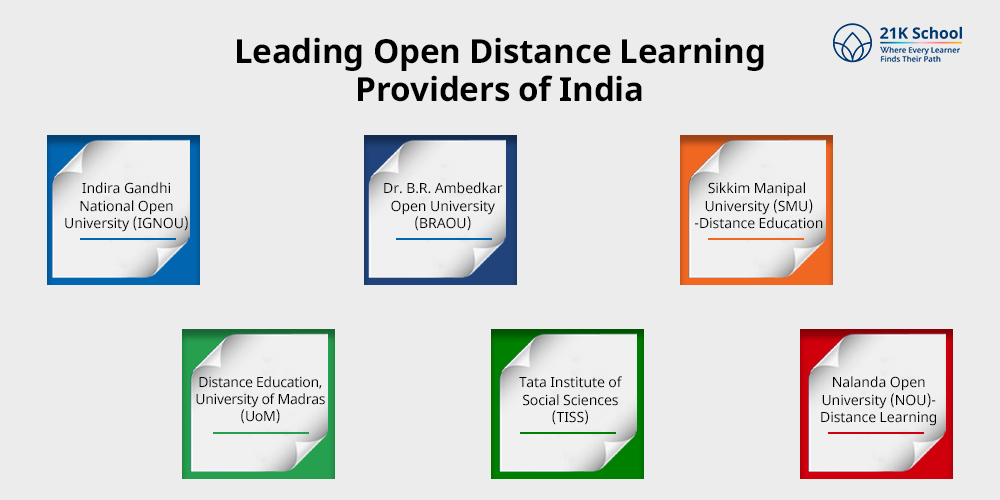
The diverse and vast geographical area of India has met with increasing demand for flexible educational opportunities. As a result, it has made India one of the largest markets of Open and Distance Learning (ODL).
A number of non-slimy and reputed institutes and organisations have been able to integrate ODL pattern to serve the students. Especially those who lack time to attend classes, but highly demand quality education.
The large providers of ODL in India are:
1. Indira Gandhi National Open University (IGNOU)
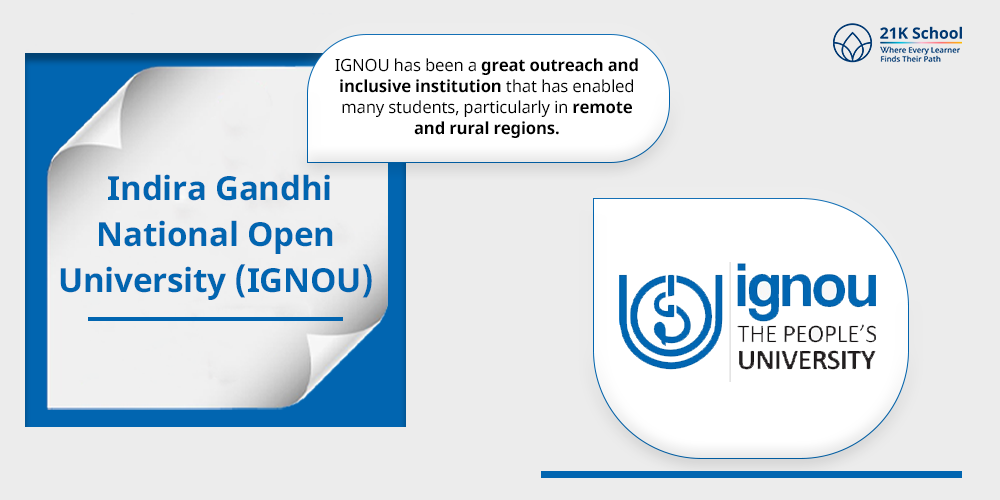
IGNOU remains one of the most famous and the largest open and distance learning providers in India. Founded in 1985, it conducts a variety of undergraduate, diploma and certificate courses in various disciplines including arts, and sciences.
IGNOU has been a great outreach and inclusive institution that has enabled many students, particularly in remote and rural regions.
2. Dr. B.R. Ambedkar Open University (BRAOU)
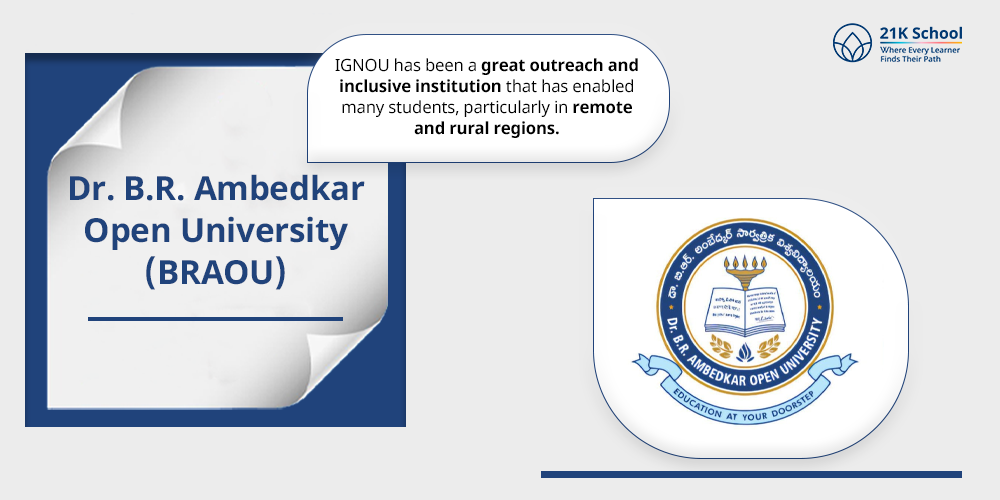
BRAOU is based in Hyderabad and proposes a very vast range of post-graduate and undergraduate courses. It is directed to educate the marginalized and disadvantaged groups of people, its study centers are widespread in the country.
3. Sikkim Manipal University (SMU) -Distance Education
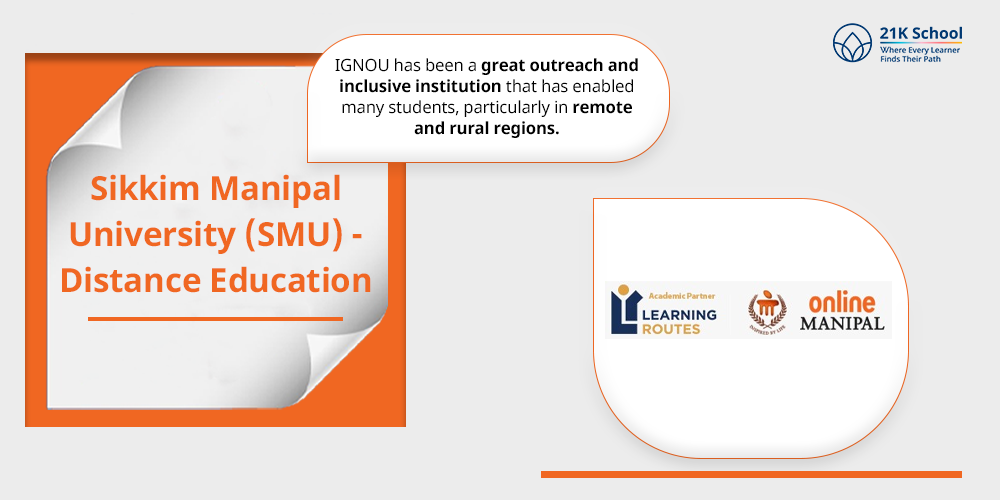
SMU distances are provided by professional and technical programs. It specializes in career oriented programs in business, IT, health sciences, and management.
SMU has attracted students in droves that are looking to acquire quality distance learning.
4. Distance Education, University of Madras (UoM)
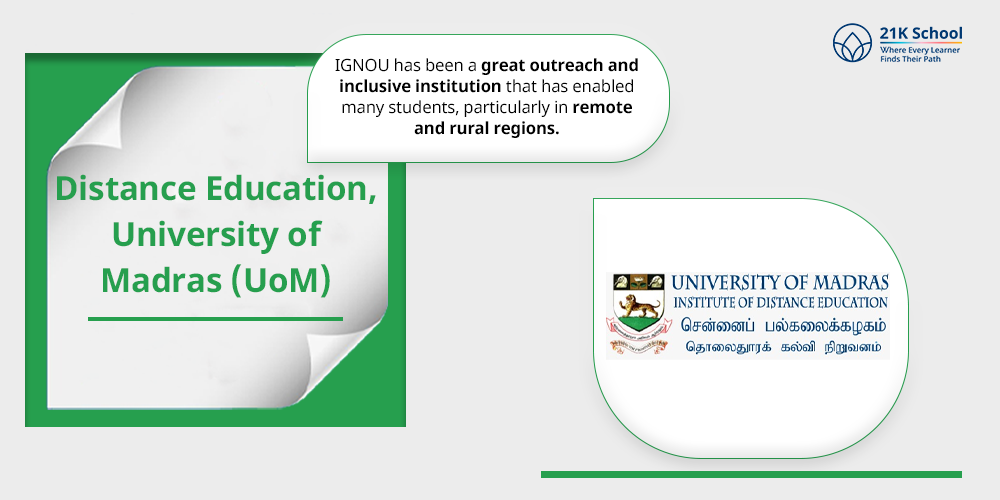
UoM is a long established institution that offers distance learning programs as it began operations in 1981. It provides many undergraduate, postgraduate and certificate programs in arts, sciences, and commerce among others.
The distance education of UoM has developed a big reputation due to its wide support facilities and good academic standing.
5. Tata Institute of Social Sciences (TISS)
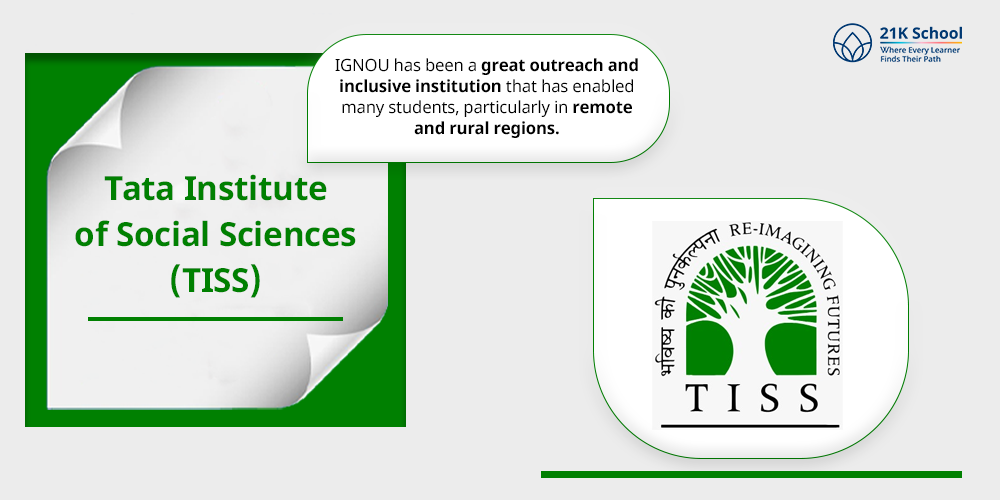
TISS runs niche courses in social work, human resource management, and also public health based on ODL modes. The college uses both a solid academic foundation and contemporary technology to ensure flexible learning among working individuals and other students.
6. Nalanda Open University (NOU)-Distance Learning
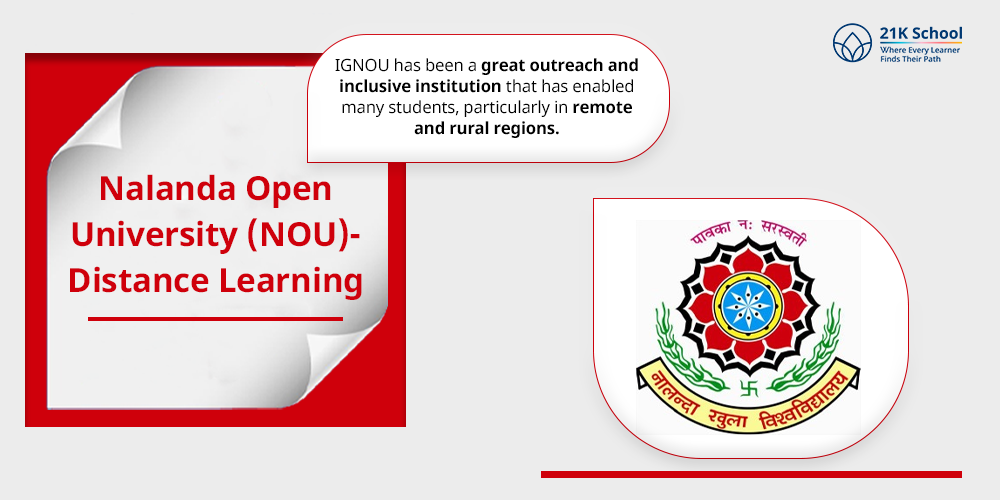
Nalanda Open University, is a project taken after the old Nalanda University. It has also embarked in the ODL by having innovative and cross-disciplinary courses.
It involves incorporation of the options of distance and online learning among its students.
Difference Between Open Learning and Distance Learning
Open Learning and Distance Learning are terms most commonly used interchangeably, but still they have slight differences. It is valuable to know about such differences to all those learners who are searching possible ways of education.
| Aspect | Open Learning | Distance Learning |
| Entry Requirements | No formal entry requirements; open to all learners. | Requires specific academic qualifications or prerequisites. |
| Learning Structure | Self-paced, flexible schedule; learners control the pace | Structured curriculum with fixed deadlines and timelines. |
| Curriculum Flexibility | Highly flexible; students can choose their own subjects and courses | Fixed curriculum with predefined courses and learning paths. |
| Mode of Learning | Independent study with minimal supervision. | Remote learning with virtual classrooms and occasional in-person sessions. |
| Academic Support | Limited support; self-help materials and occasional tutor guidance. | Comprehensive support, including tutors, mentors, and peer interactions. |
| Assessment System | Informal assessments (self-evaluations, project-based). | Formal assessments (exams, quizzes, assignments, projects). |
| Physical Attendance | No physical attendance required. | May require occasional face-to-face interaction for exams or workshops. |
| Cost | Generally more affordable due to minimal infrastructure. | Costs vary, and can be higher due to structured support and technology. |
| Global Accessibility | Open to anyone globally with minimal barriers. | Accessible globally but may have regional restrictions or entry requirements. |
| Learning Support System | Limited support, mostly independent learning. | Structured academic advising, career counseling, and technical help. |
1. Entry Requirements
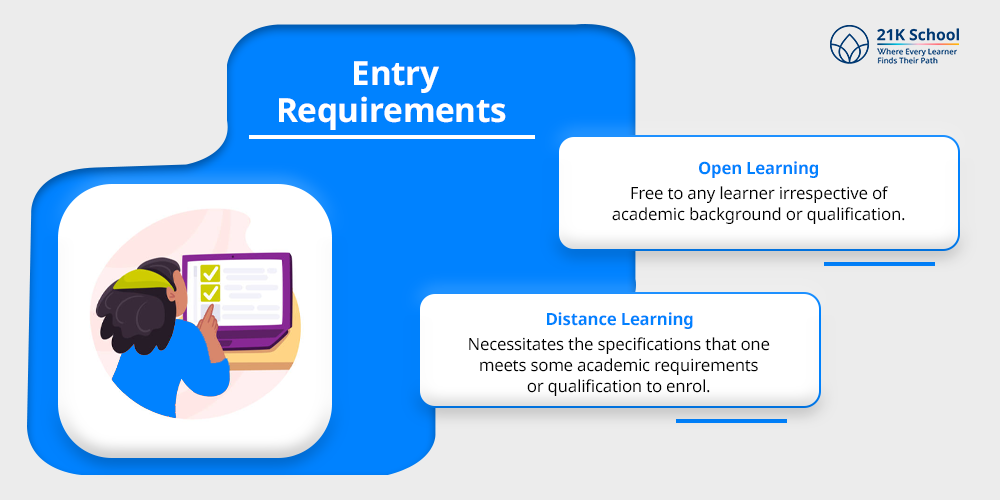
- Open Learning: There are no entry prerequisites. Free to any learner irrespective of academic background or qualification.
- Distance Learning: Necessitates the specifications that one meets some academic requirements or qualification to enrol.
2. Learning Structure
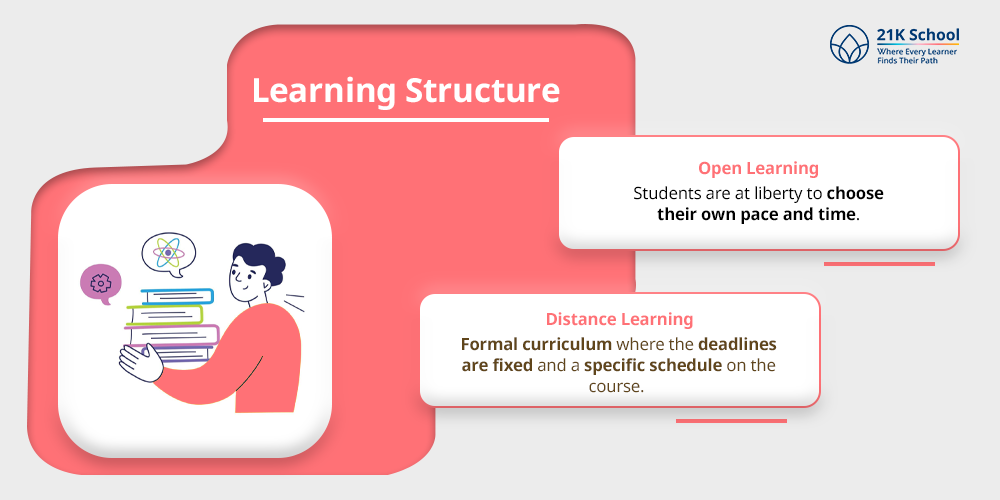
- Open Learning: Flexibility on what to study and when to study. Students are at liberty to choose their own pace and time.
- Distance Learning: Formal curriculum where the deadlines are fixed and a specific schedule on the course. Learning is done remotely but the students are supposed to complete a learning schedule.
3. Curriculum Flexibility
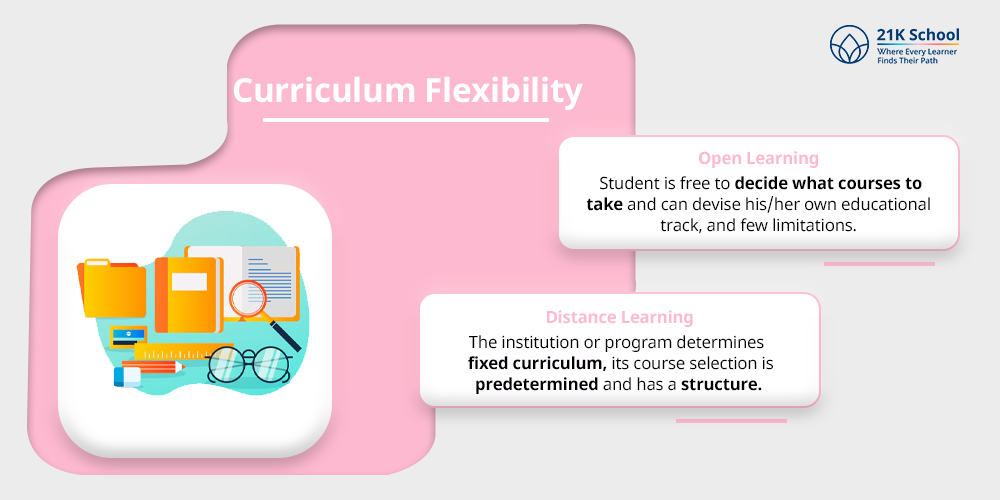
- Open Learning: Variable curriculum; student is free to decide what courses to take and can devise his/her own educational track, and few limitations.
- Distance Learning: The institution or program determines a fixed curriculum, its course selection is predetermined and has a structure.
4. Learning Mode
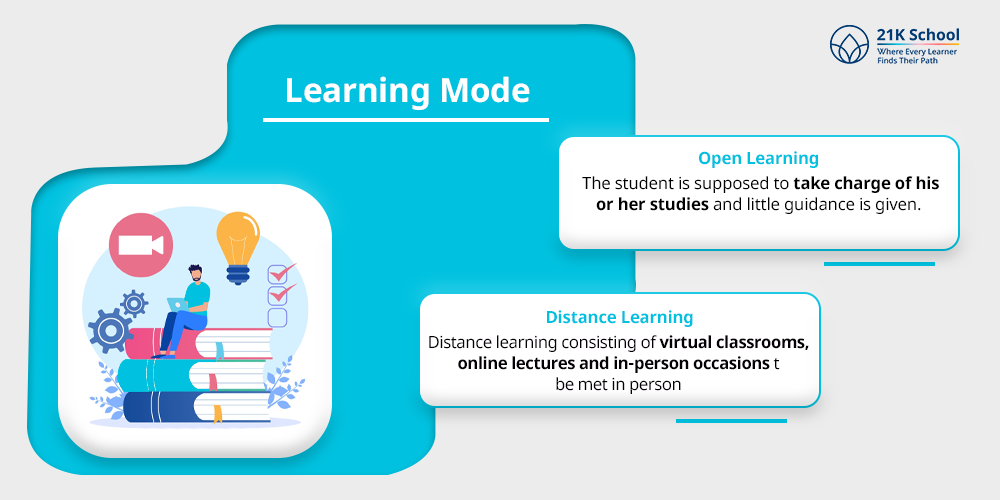
- Open Learning: Relying, in the first place, on independent study. The student is supposed to take charge of his or her studies and little guidance is given.
- Distance Learning: Distance learning consisting of virtual classrooms, online lectures and in-person occasions to be met in person (workshops or exams).
5. Academic Support
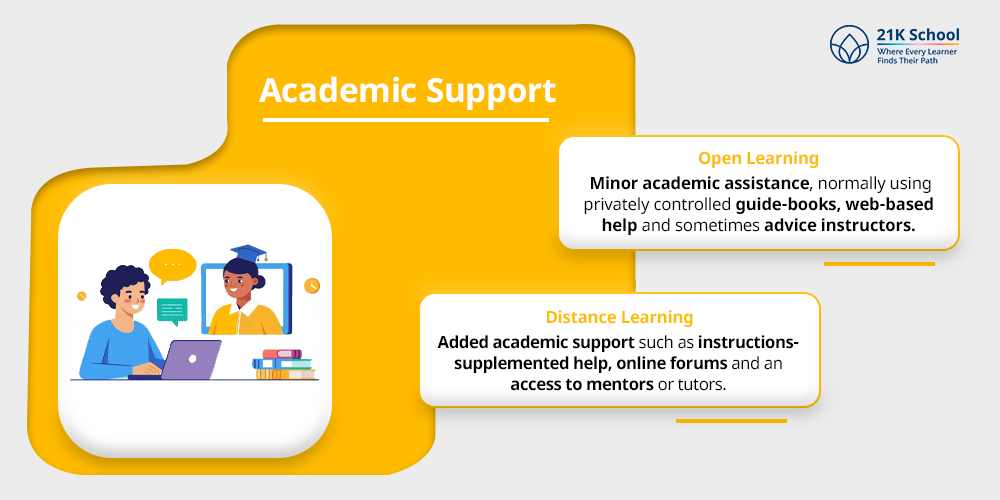
- Open Learning: Minor academic assistance, normally using privately controlled guide-books, web-based help and sometimes advice instructors.
- Distance Learning: Added academic support such as instructions-supplemented help, online forums and an access to mentors or tutors.
6. Assessment System
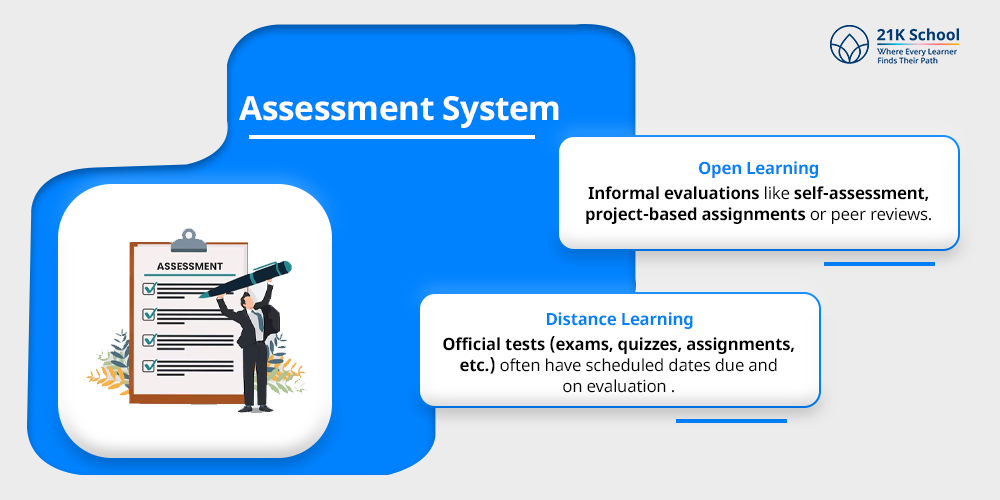
- Open Learning: Informal evaluations like self-assessment, project-based assignments or peer reviews. No arranged schedules of exams usually exist.
- Distance Learning: Official tests (exams, quizzes, assignments, etc.) often have scheduled dates due and on evaluation .
7. Physical Attendance
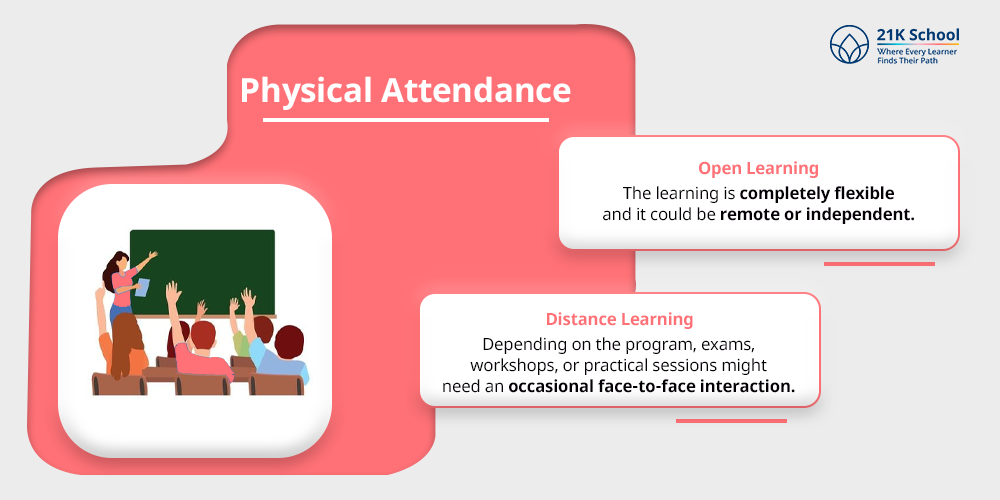
- Open Learning: No physical appearance needed. The learning is completely flexible and it could be remote or independent.
- Distance Learning: Depending on the program, exams, workshops, or practical sessions might need an occasional face-to-face interaction.
8. Cost
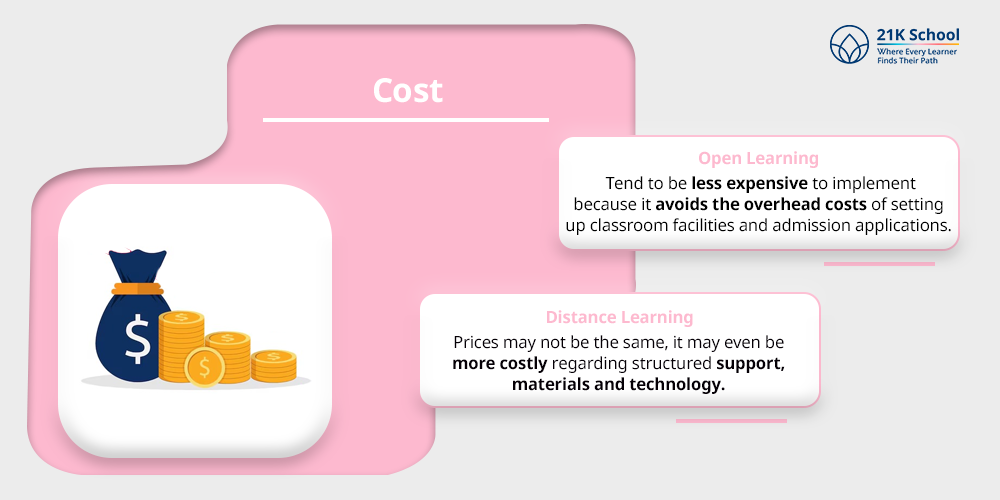
- Open Learning: Tend to be less expensive to implement because it avoids the overhead costs of setting up classroom facilities and admission applications. Attention is paid to the cheaper option of cost to the learners.
- Distance Learning: Prices may not be the same. Although distance learning is relatively less expensive than normal education, it may even be more costly regarding structured support, materials and technology.
9. Global Accessibility
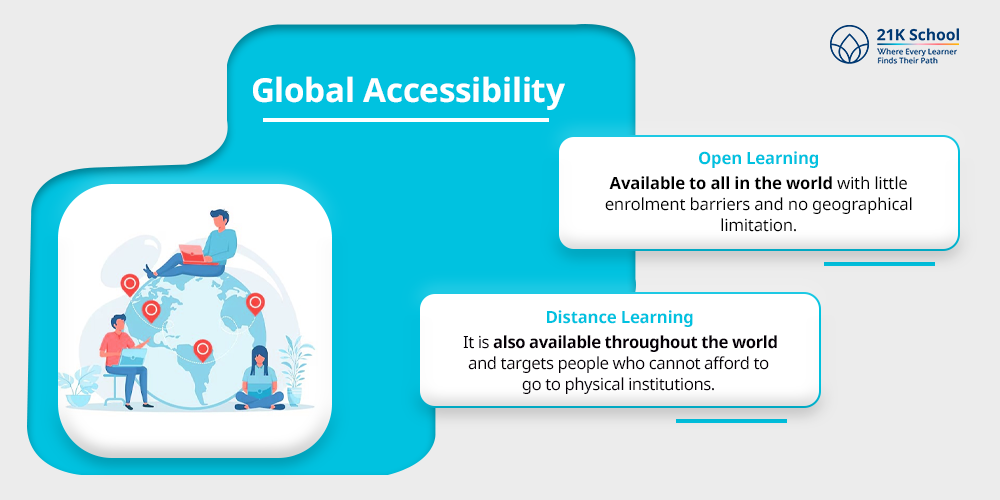
- Open Learning: Available to all in the world with little enrolment barriers and no geographical limitation.
- Distance Learning: It is also available throughout the world and targets people who cannot afford to go to physical institutions. Nevertheless, other programs might be restricted or require entrance.
10. LSS or Learning Support System
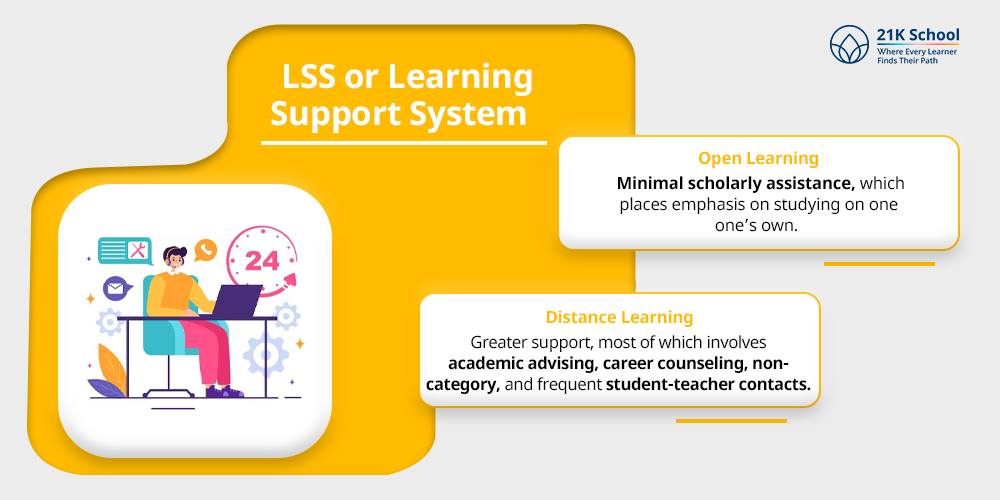
- Open Learning: Minimal scholarly assistance, which places emphasis on studying on one one’s own. The support can be in terms of the online resources, books, or a brief contact with tutors.
- Distance Learning: Greater support, most of which involves academic advising, career counseling, non-category, and frequent student-teacher contacts.
Challenges in Open and Distance Learning
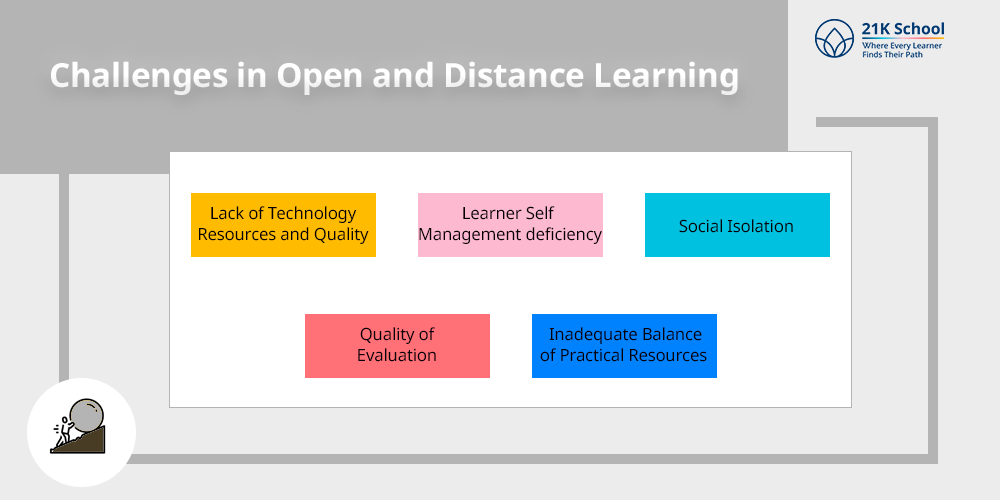
Even though Open and Distance Learning (ODL) has several benefits, it has various challenges, which may affect its success and accessibility. The need to know these challenges is important to enhance the ODL ecosystem.
1. Lack of Technology Resources and Quality
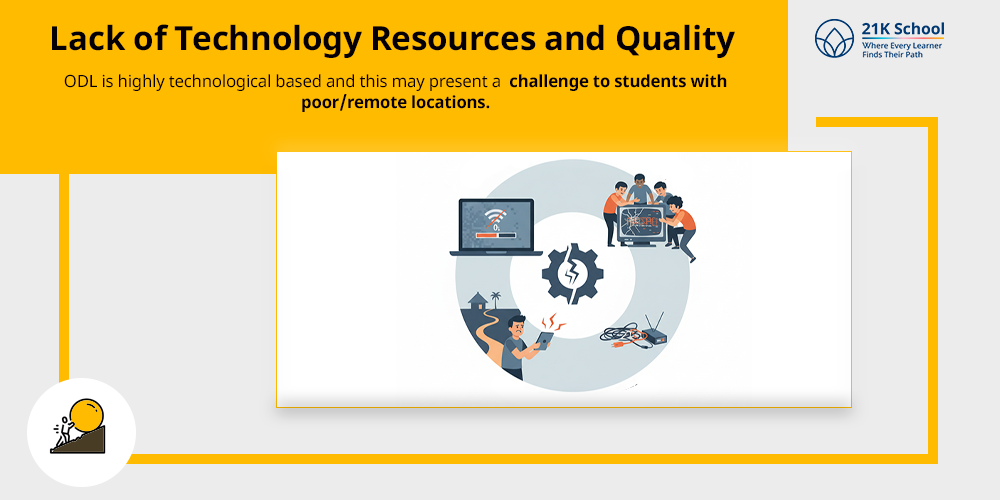
ODL is highly technological based and this may present a challenge to students with poor/remote locations. Unstable internet, lack of contemporary equipment, and even technological infrastructures may keep students out of the access to online courses.
This technological inequality tends to worsen the digital divide as students who come with poor backgrounds get disadvantaged.
Solutions:
- Increase infrastructures within the countryside and farbacks.
- Make the devices and internet services affordable.
2. Learner Self‑Management deficiency
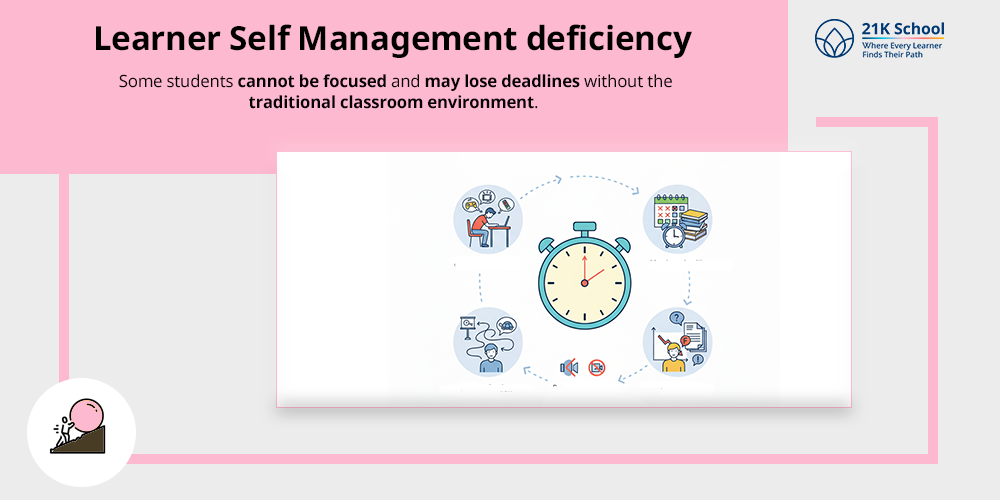
Self control and time management can be a major requirement in ODL. Some students cannot be focused and may lose deadlines without the traditional classroom environment.
Poor face-to-face communication and monitoring may trigger procrastination and low grades. Therefore, it becomes crucial that the learners understand the importance of time management for student .
Solutions:
- Extensive knowledge on time management and self-regulation should be taught.
- Give frequent reminders and feedback using online mediums.
3. Social Isolation
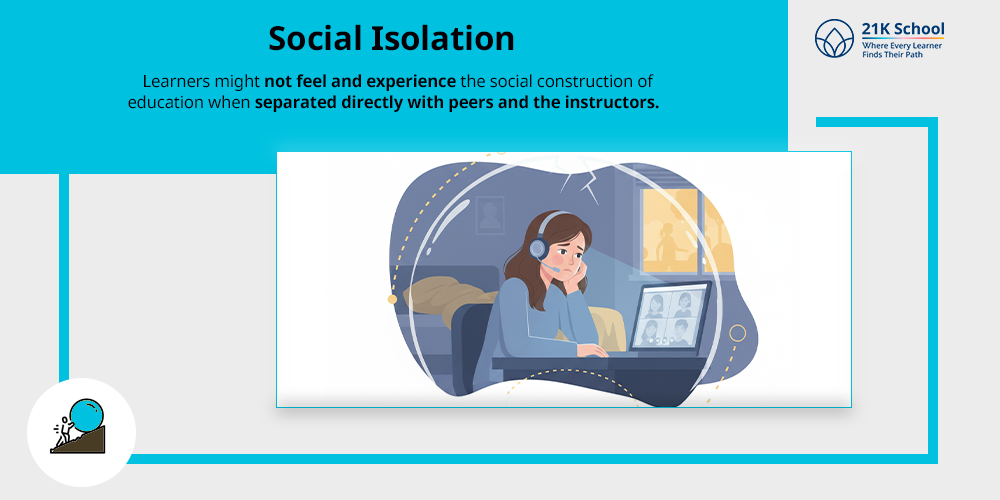
Among the popular criticisms of ODL is the social isolation that one can experience with the use of it. Learners might not feel and experience the social construction of education when separated directly with peers and the instructors.
This may cause loneliness and disconnectedness that may adversely affect learning results and interest.
Solutions:
- Encourage e-community and learning teams.
- Conduct regular face to face workshops or conferences.
4. Quality of Evaluation
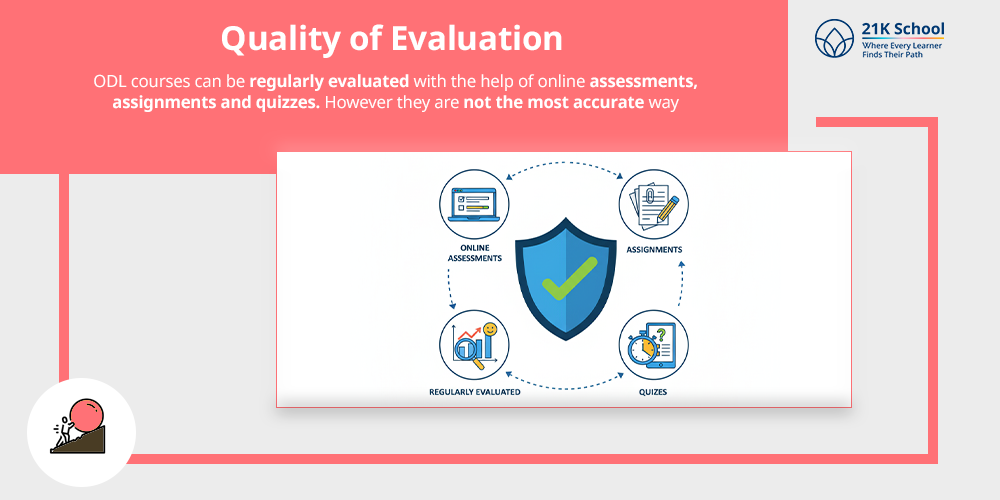
ODL courses can be regularly evaluated with the help of online assessments, assignments and quizzes. However they are not the most accurate way of determining how much a student understands the material.
Also, it may be possible to cheat, commit academic dishonesty and plagiarism in online assessment. It is important to make assessment fair and rigorous.
Solutions:
- Provide more active forms of assessment like project based assessment.
- Empower the plagiarism detection systems and proctoring systems.
5. Inadequate Balance of Practical Resources
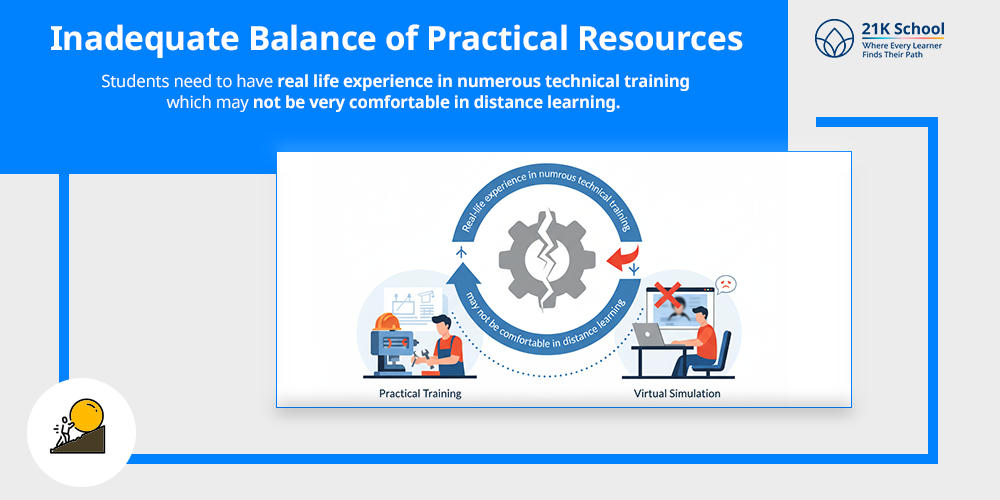
Students need to have real life experience in numerous technical training which may not be very comfortable in distance learning.
Natural sciences, engineering, health science, or arts courses may require physical laboratory access, equipment, and in-field experiences, not readily achieved online.
Solutions:
- Singularize hybrid models so they include virtual and physical lab sessions.
- Collaborate with the local industries or schools to provide real-life experiences.
Strategies to Implement Open and Distance Learning
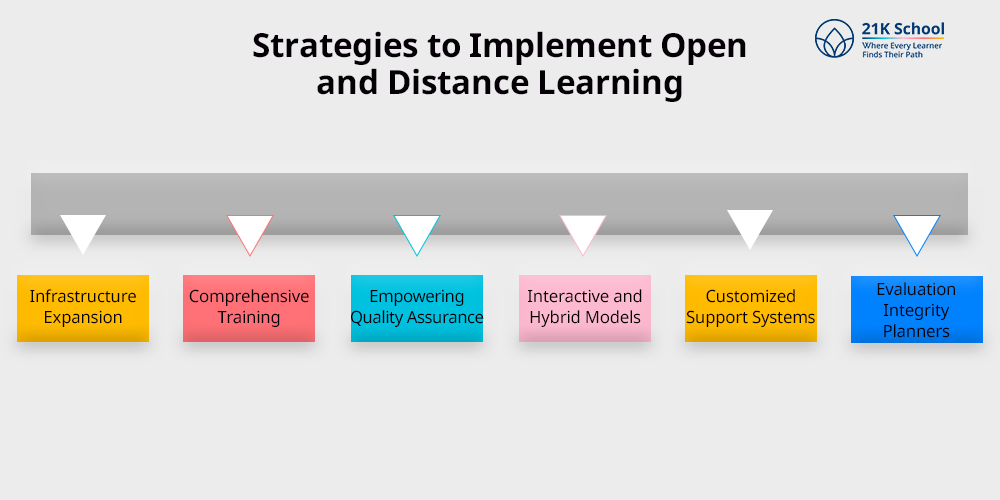
Institutions must implement holistic solutions to provide infrastructure, quality, and support to learners in order to mitigate challenges of ODL.
1. Infrastructure Expansion
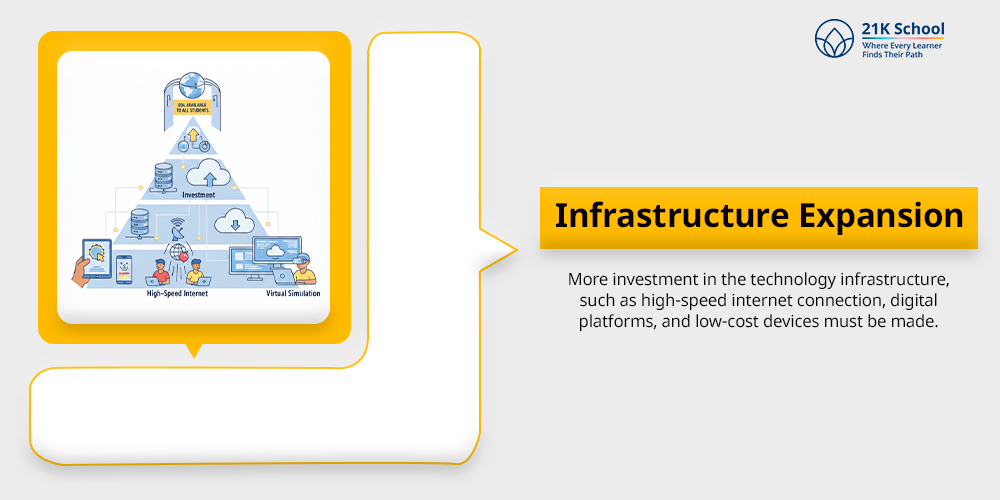
More investment in the technology infrastructure, such as high-speed internet connection, digital platforms, and low-cost devices must be made. So that ODL can become available to all students.
By expanding this infrastructure to cover rural and remote regions, the technological access will be greatly lessened by learners.
2. Comprehensive Training
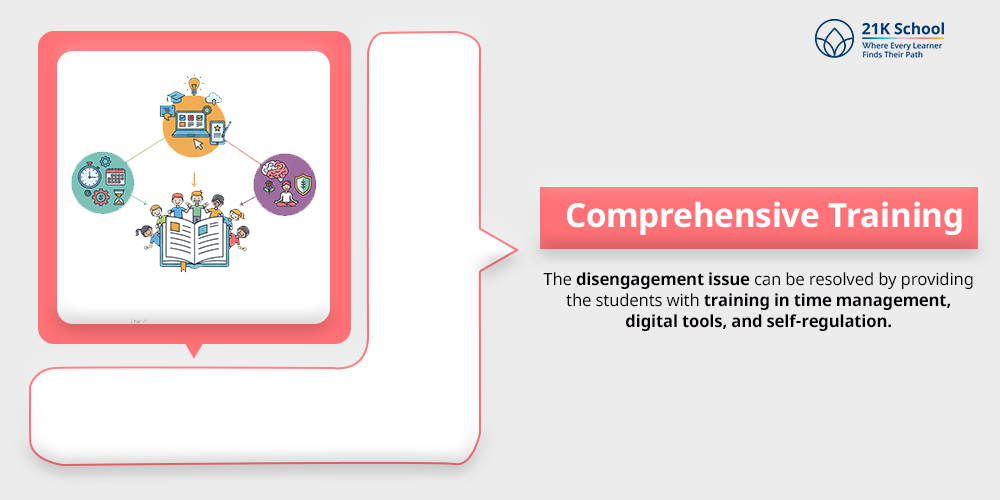
The disengagement issue can be resolved by providing the students with training in time management, digital tools, and self-regulation. Institutions need to provide resources, workshops, and webinars to assist students to deal with their academic tasks.
3. Empowering Quality Assurance
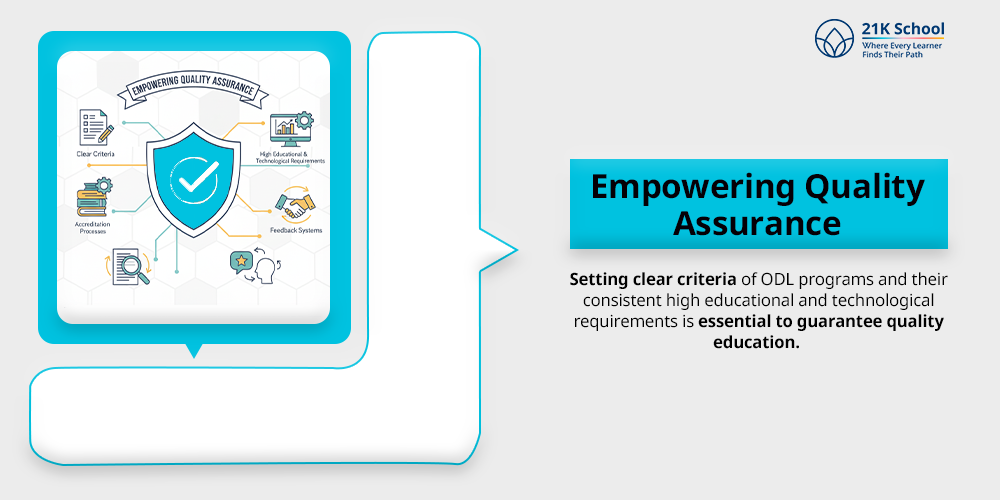
Setting clear criteria of ODL programs and their consistent high educational and technological requirements is essential to guarantee quality education.
Accreditation processes, frequent reviews, and feedback systems ensure that institutions can keep enhancing their services.
4. Interactive and Hybrid Models
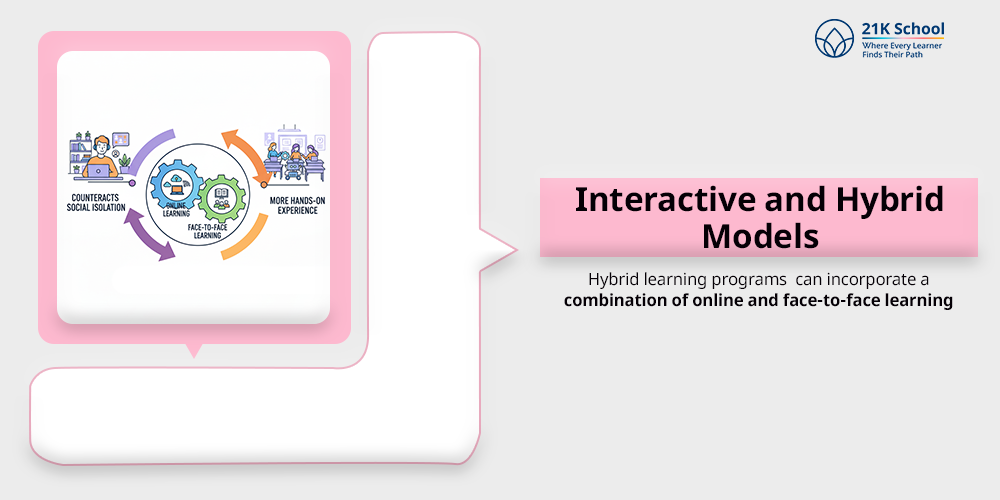
Hybrid learning programs can incorporate a combination of online and face-to-face learning. They will help counteract the problem of social isolation as well as provide more hands-on experience.
In this model, students can enjoy the flexibility of ODL but also get exposure to peer interaction and hands-on learning.
5. Customized Support Systems
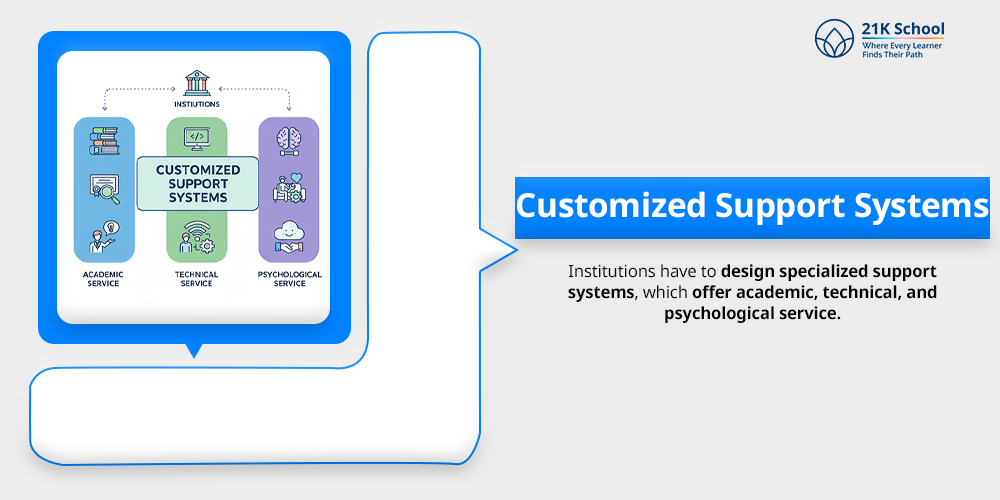
Institutions have to design specialized support systems, which offer academic, technical, and psychological service. Individualized paths, tutoring, counseling, and mentorship programs may encourage students to be motivated and find their way through obstacles.
6. Evaluation Integrity Planners
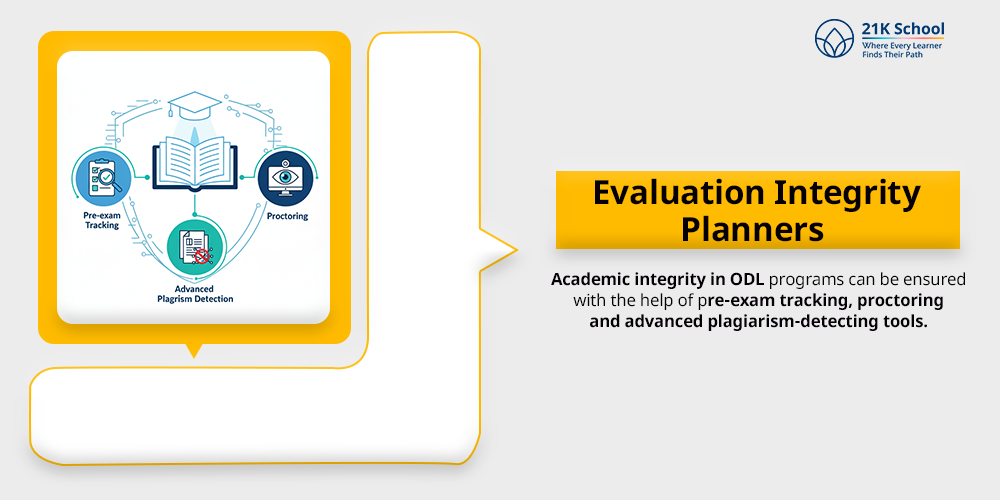
Academic integrity in ODL programs can be ensured with the help of pre-exam tracking, proctoring and advanced plagiarism-detecting tools. The credibility and rigor of assessments also may be enhanced by supporting the use of a wider range of available assessments.
These types include peer reviews, project work, and practical assignments.
Trends in Open and Distance Learning in Future
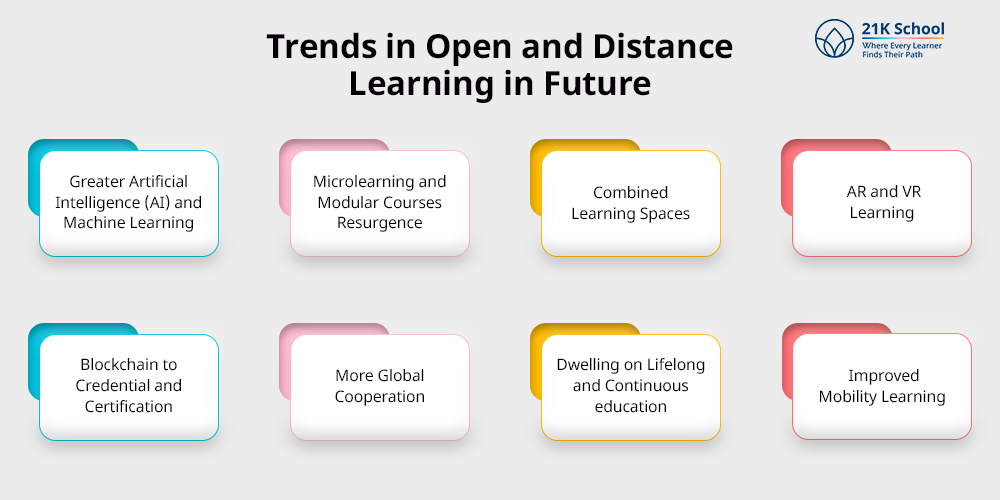
In future years, Open and Distance Learning (ODL) may change immensely as technology skillfully advances and professional educational requirements change. Listed are some of the major future trends of ODL:
1. Greater Artificial Intelligence (AI) and Machine Learning
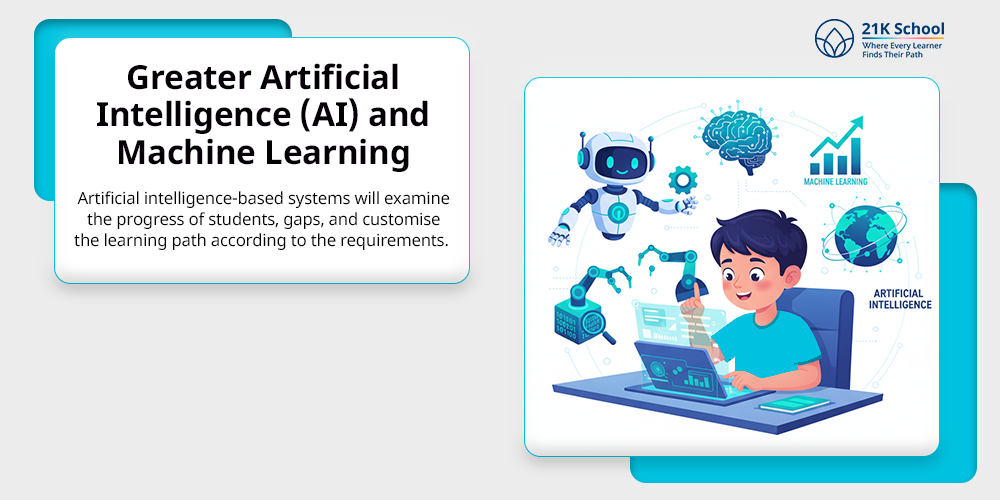
Machine learning and AI will be used to personalize the learning process among ODL students. Artificial intelligence-based systems will examine the progress of students, gaps, and customise the learning path according to the requirements.
Smart chatbots can also work day and night, which can give immediate feedback and help to learners. Also read the future of AI in education .
2. Microlearning and Modular Courses Resurgence
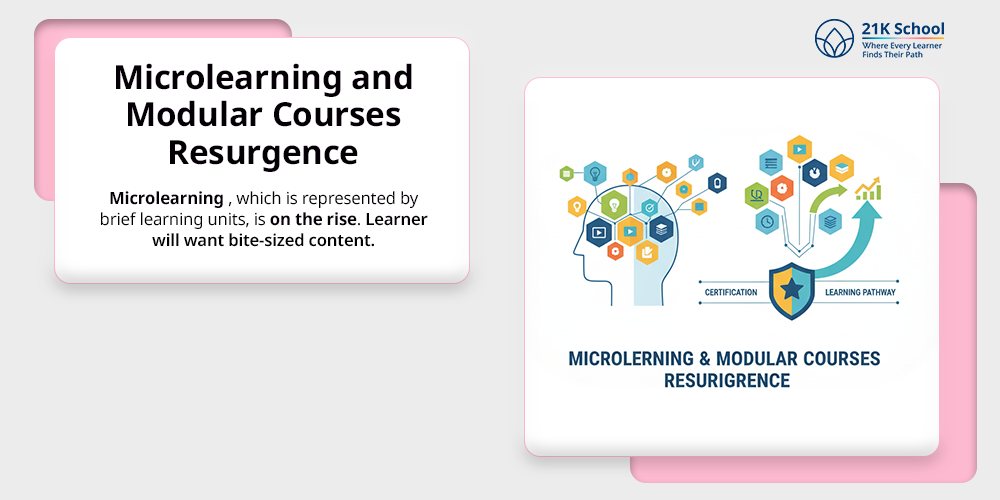
Microlearning , which is represented by brief learning units, is on the rise. Learners will want bite-sized content.
Since they will have little time to train with demanding schedules that need them to learn new skills effectively. And it is likely to grow to a more noteworthy scale.
The courses may be bundled to make complete learning pathways or certifications.
3. Combined Learning Spaces
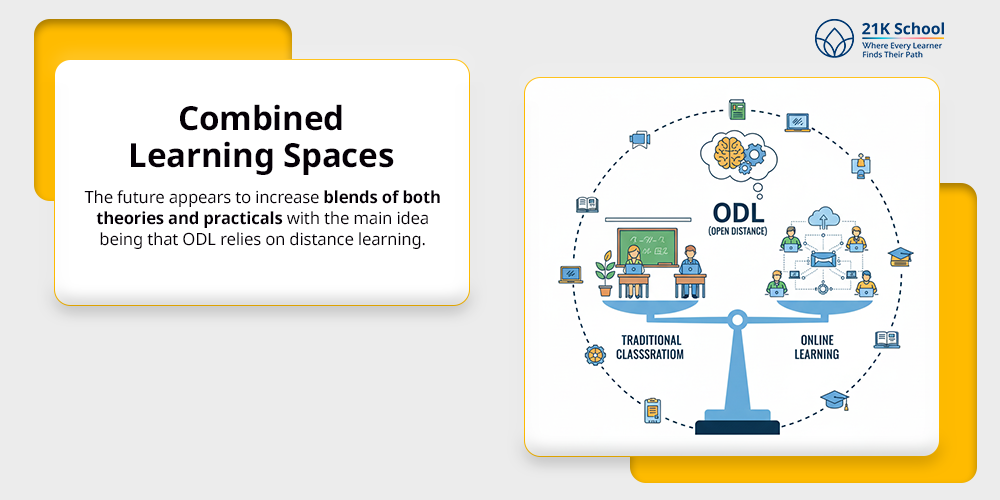
The future appears to increase blends of both theories and practicals with the main idea being that ODL relies on distance learning. These fall between the most desirable features of both traditional classroom education and online learning.
It entails a balance of classroom and online options. The hybrid formats have the ability of fitting broad learning preferences favouring involvement and interaction.
4. AR and VR Learning
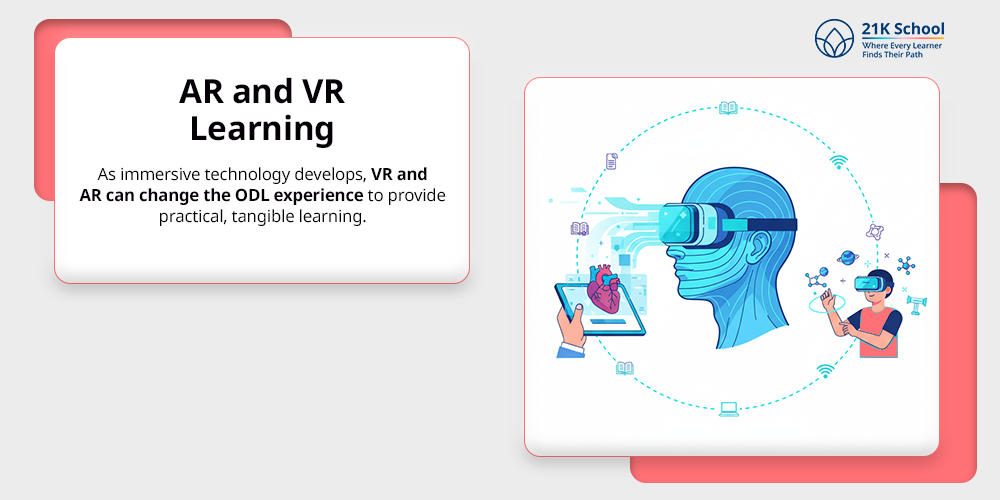
As immersive technology develops, VR and AR can change the ODL experience to provide practical, tangible learning. Engineering, medicine, and design are also fields that could be improved by virtual labs, simulations, and real life situations.
They would provide more practical knowledge without having to actually be there.
5. Blockchain to Credential and Certification
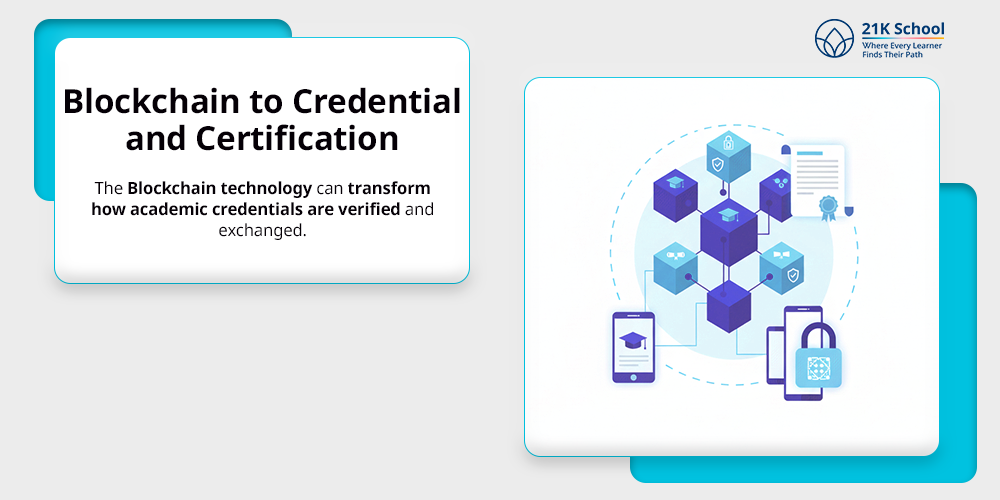
The Blockchain technology can transform how academic credentials are verified and exchanged. Blockchain would allow ODL institutes to issue secured, transparent, and tamper-proof certification.
With this the aim is to curb out fraud and have credibility in online degrees and certifications.
6. More Global Cooperation
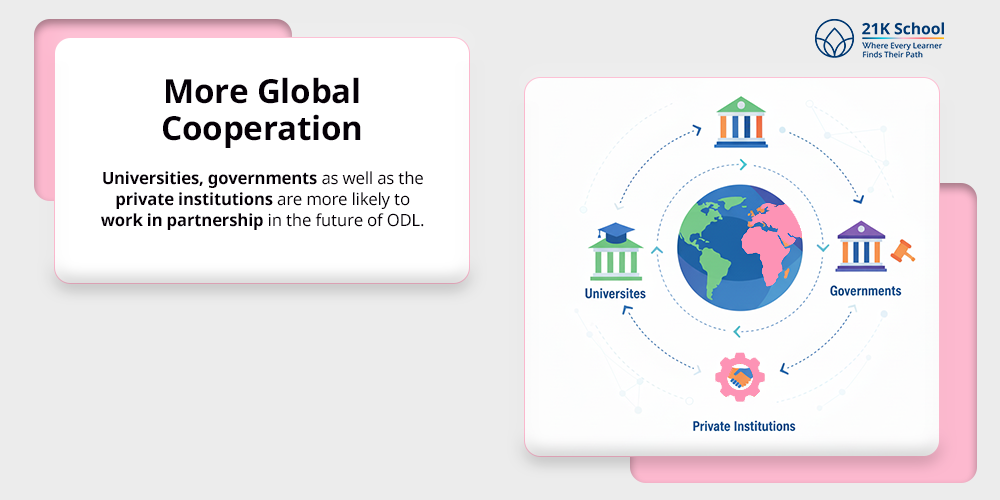
Universities, governments as well as the private institutions are more likely to work in partnership in the future of ODL. This may culminate in the creation of joint-degrees, international learning networks, and cross-nation educational projects. They will offer stakeholders a richer and international learning experience.
7. Dwelling on Lifelong and Continuous education
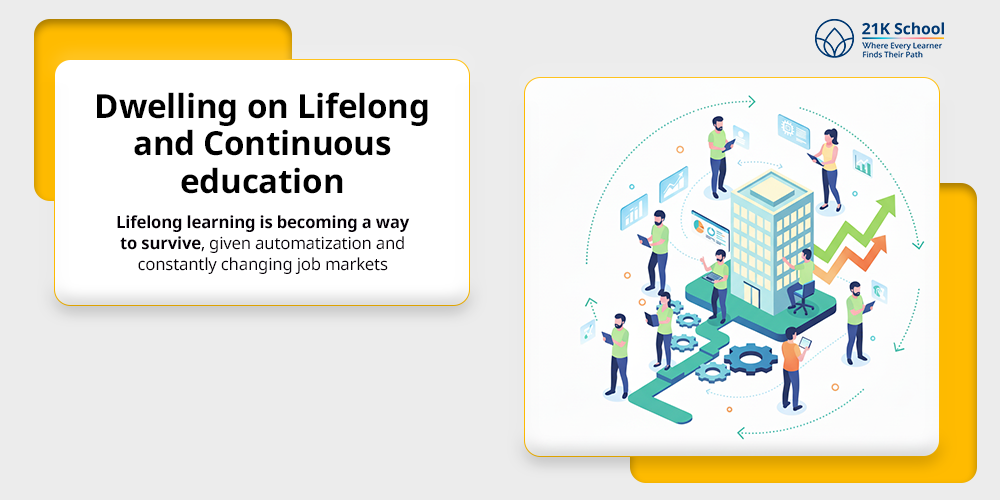
Lifelong learning is becoming a way to survive, given automatization and constantly changing job markets. The adult learners aiming to upskill or reskill, will become the most served groups by ODL.
ODL models will conform to the need of having career-focused flex programs.
8. Improved Mobility Learning
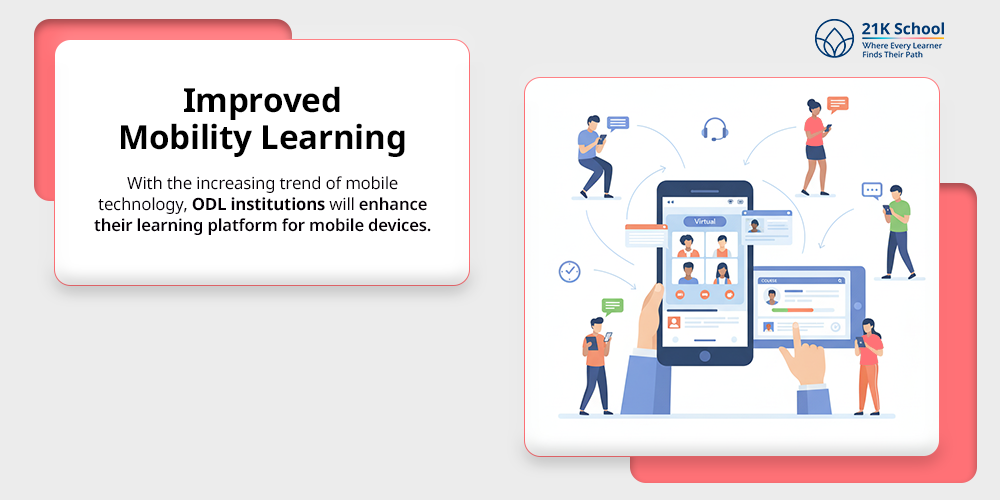
With the increasing trend of mobile technology, ODL institutions will enhance their learning platform for mobile devices. This would be to the extent that students can access content any moment.
Mobile learning, virtual classrooms, and collaboration tools will be optimized to fit smartphones and tablets, becoming more flexible and involved.
In Conclusion
Open and Distance Learning (ODL) is an educational revolution because it is flexible and is able to reach wide categories of learners. Open learning is self-paced, tons less supervision, un-formal requirements and are an excellent embodiment of lifelong learning.
Comparatively, distance learning offers a systematic program involving a predefined curriculum, tests and full backup. Distance learning has more interaction and instructor directions as both the modes empower remote learning .
Less recognizable and varied in support on various platforms, ODL is nevertheless usually more affordable. Technology is evolving, and it is probable that the two systems will change. Still offering flexible learning opportunities that suit the various needs of learners.

